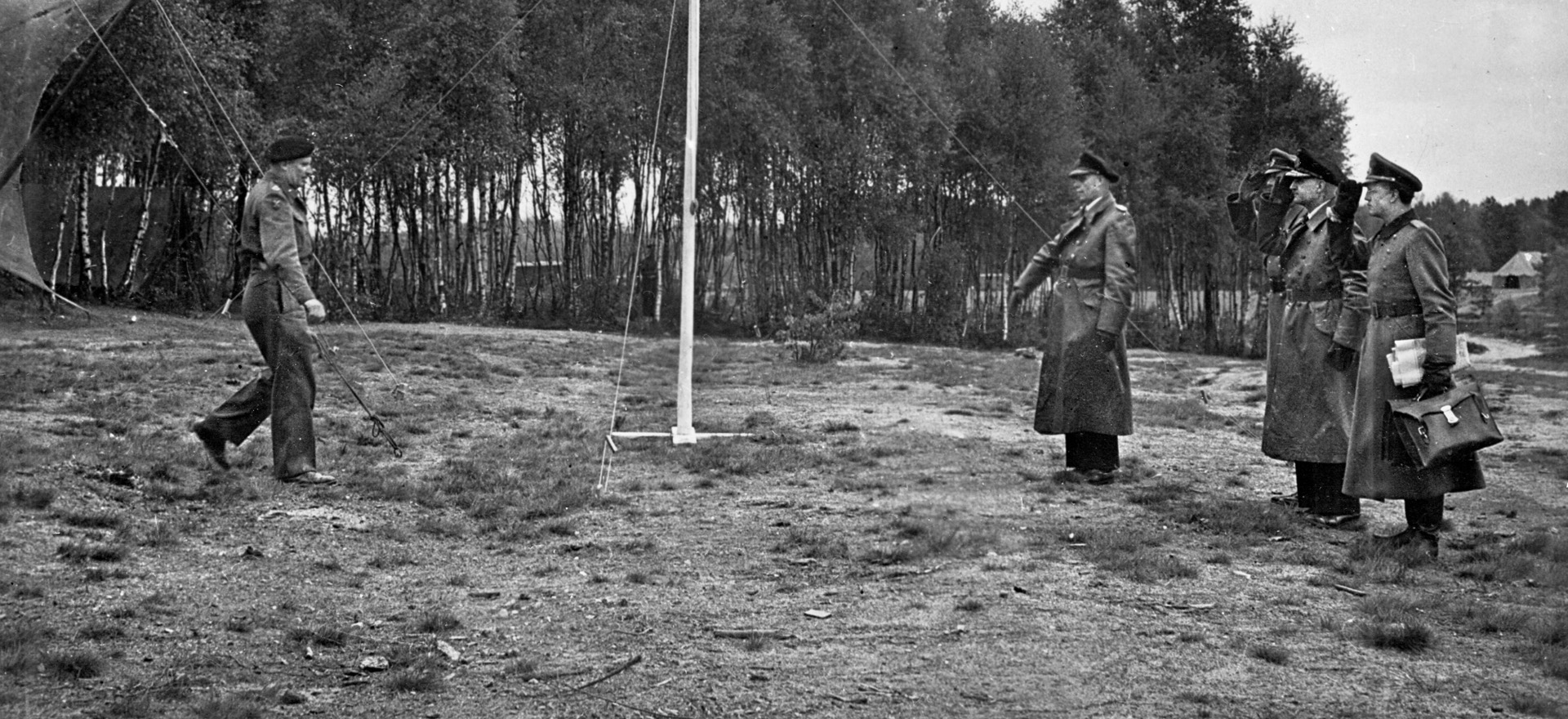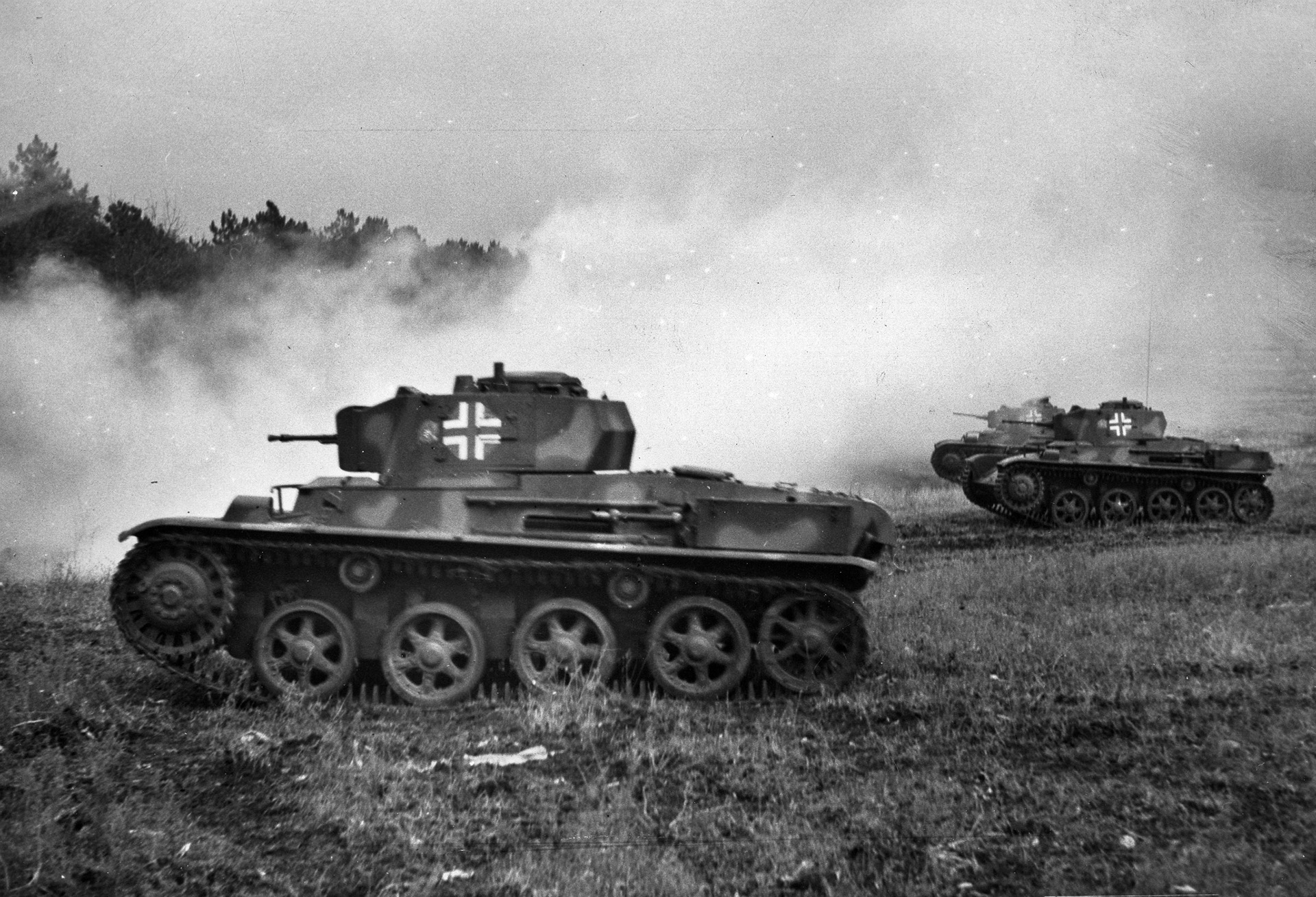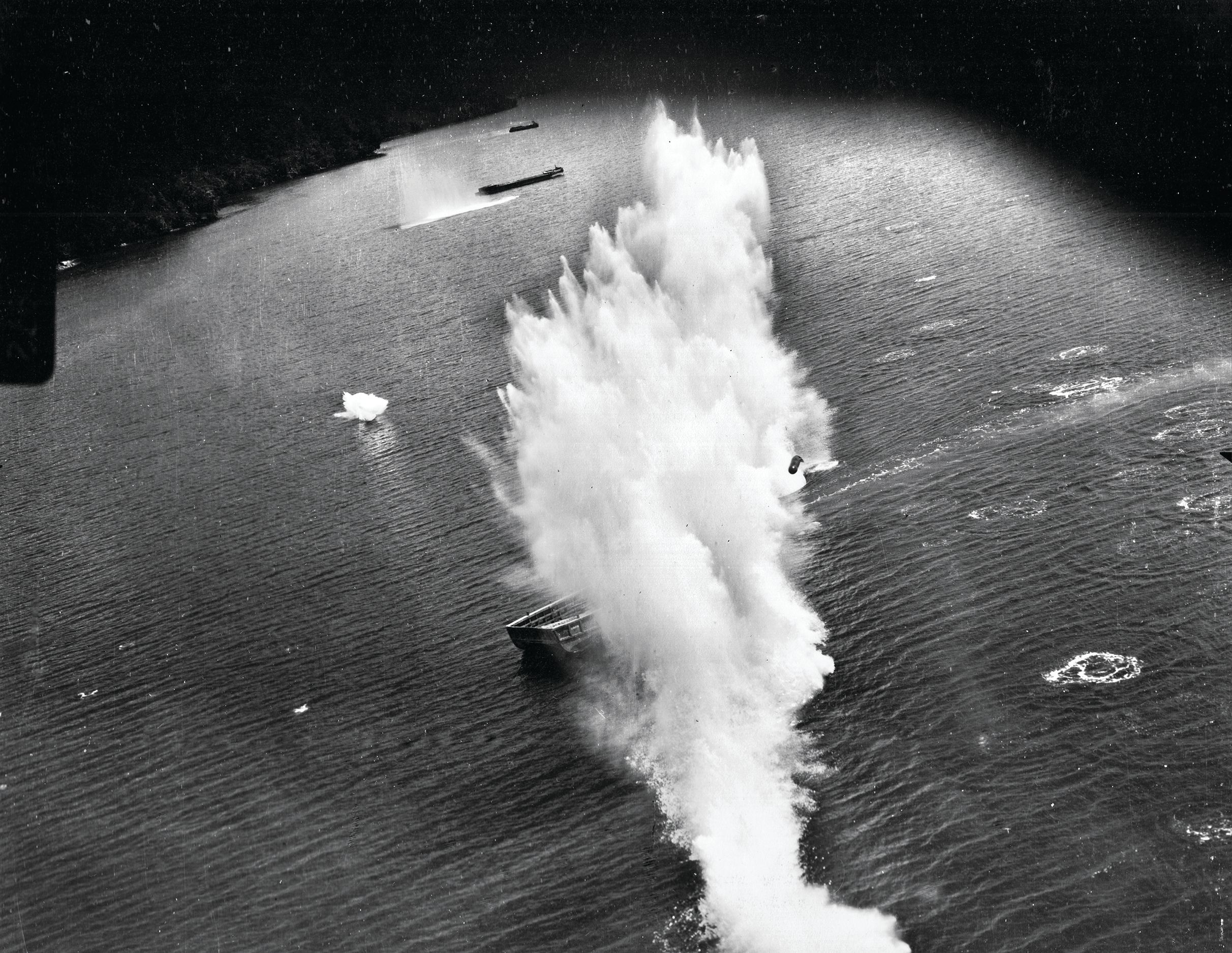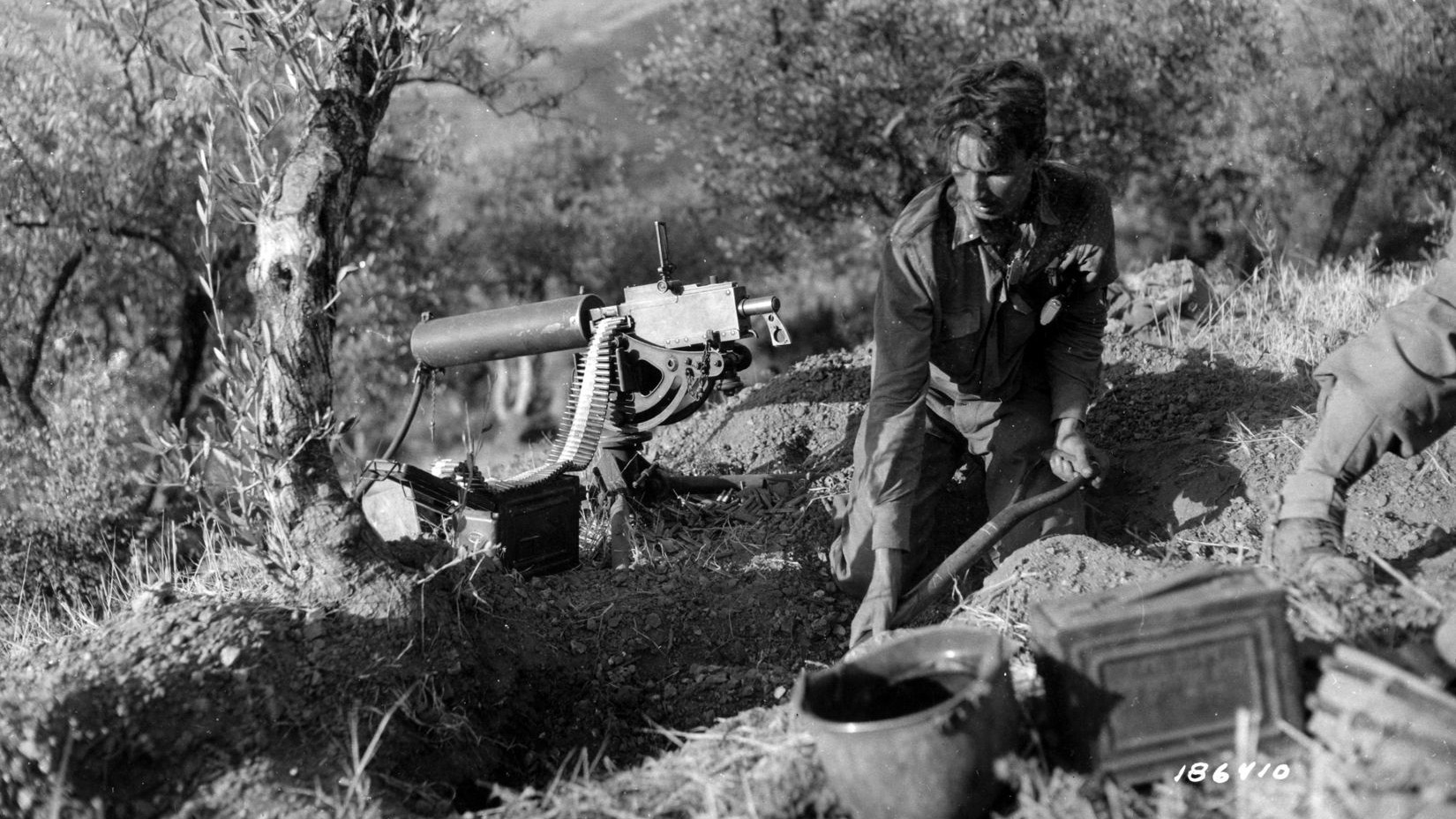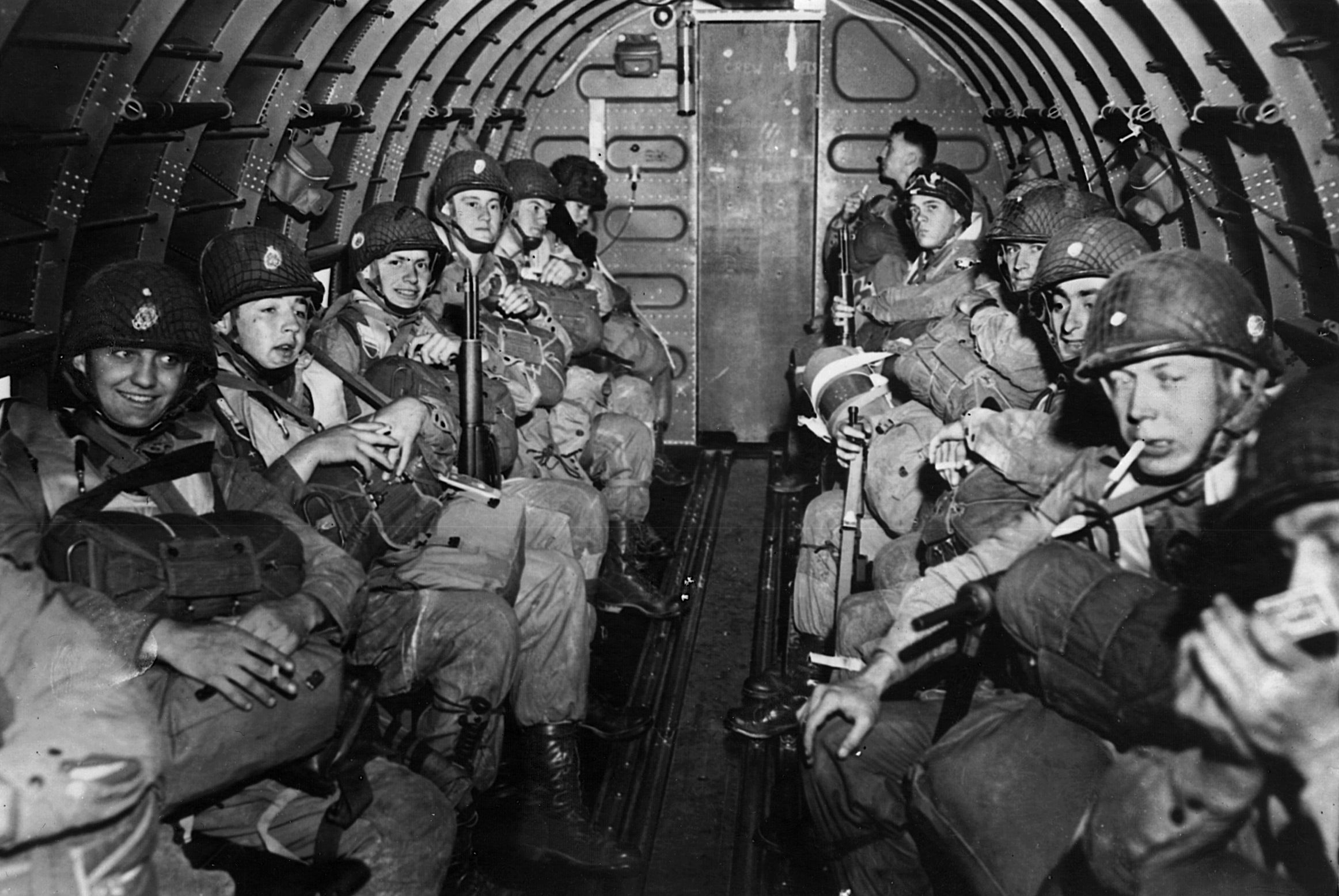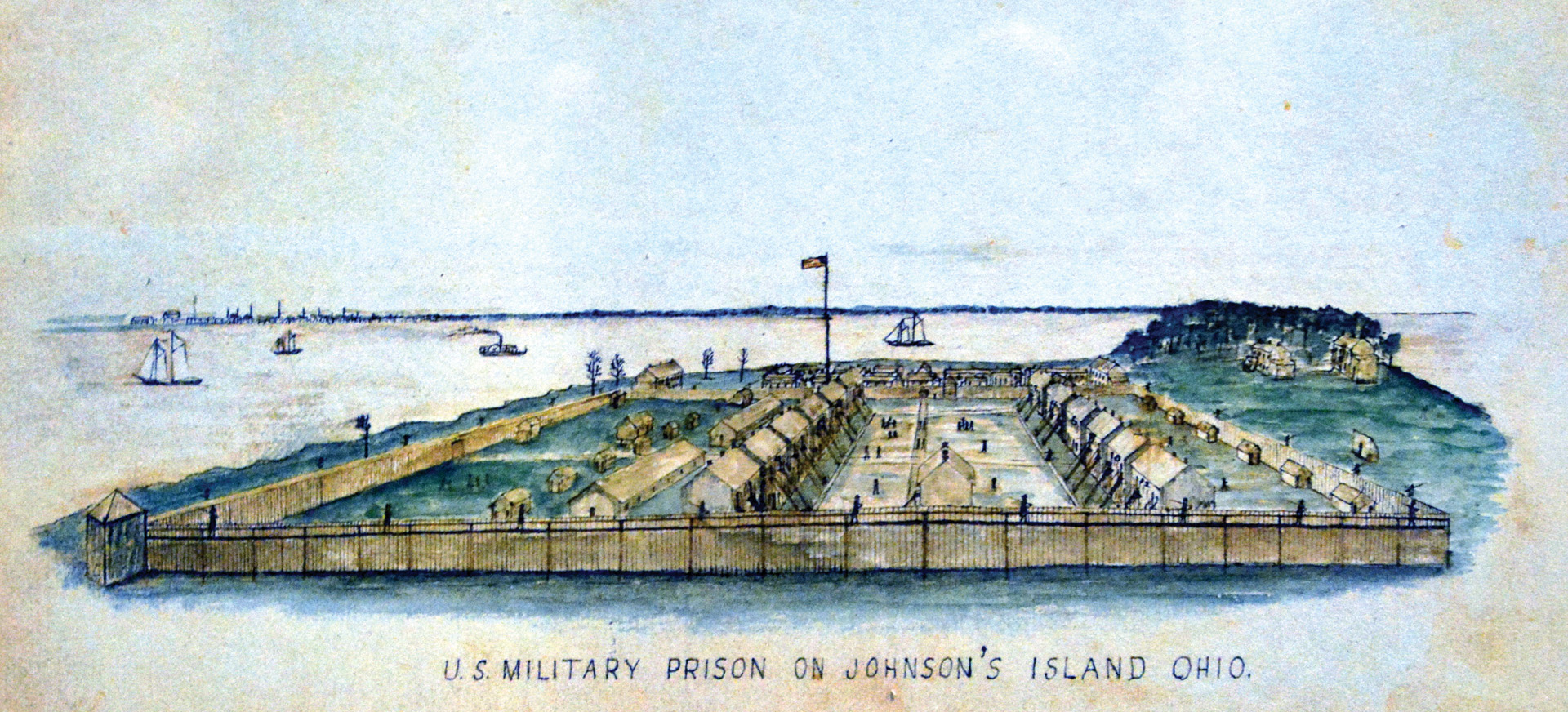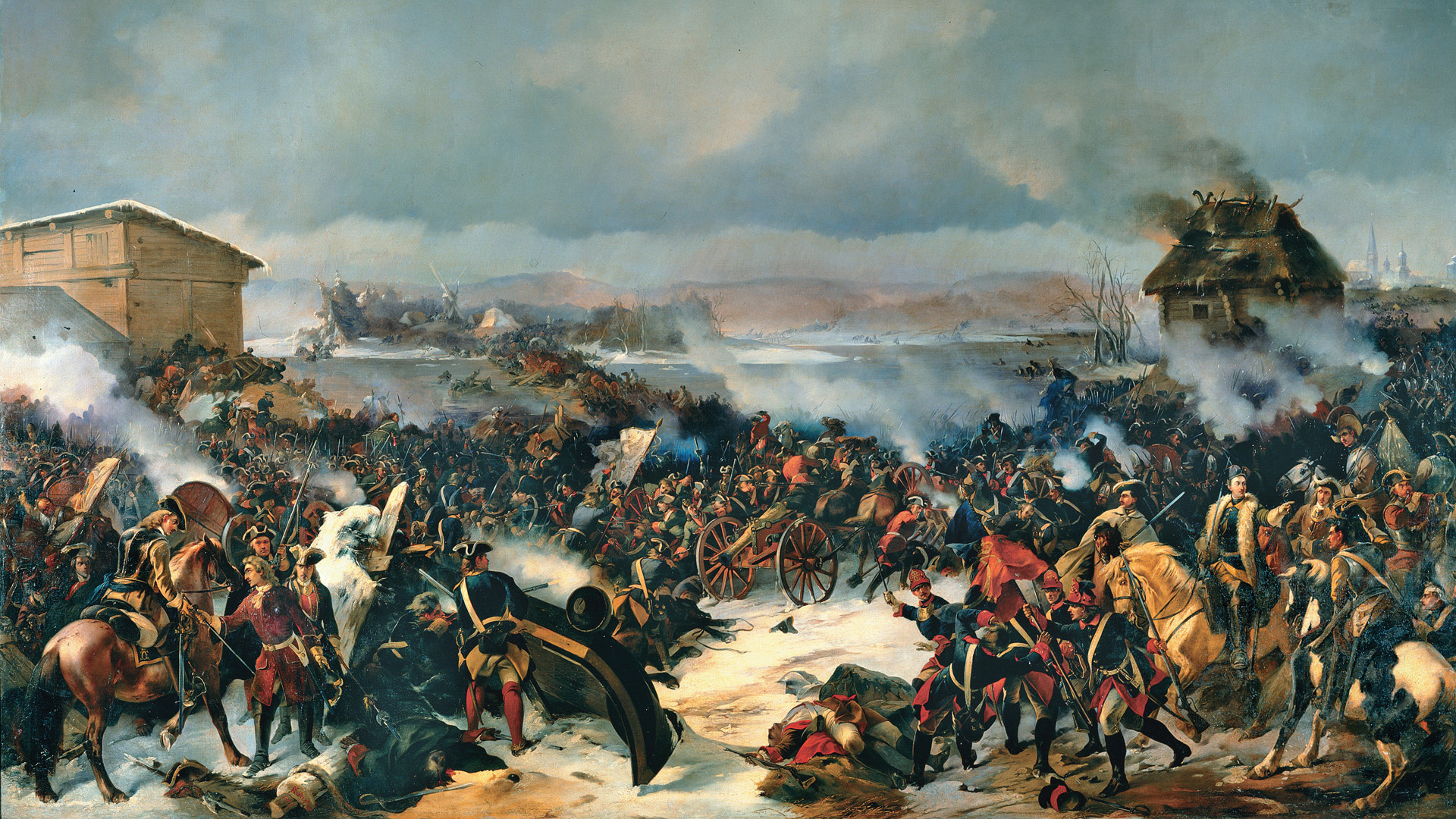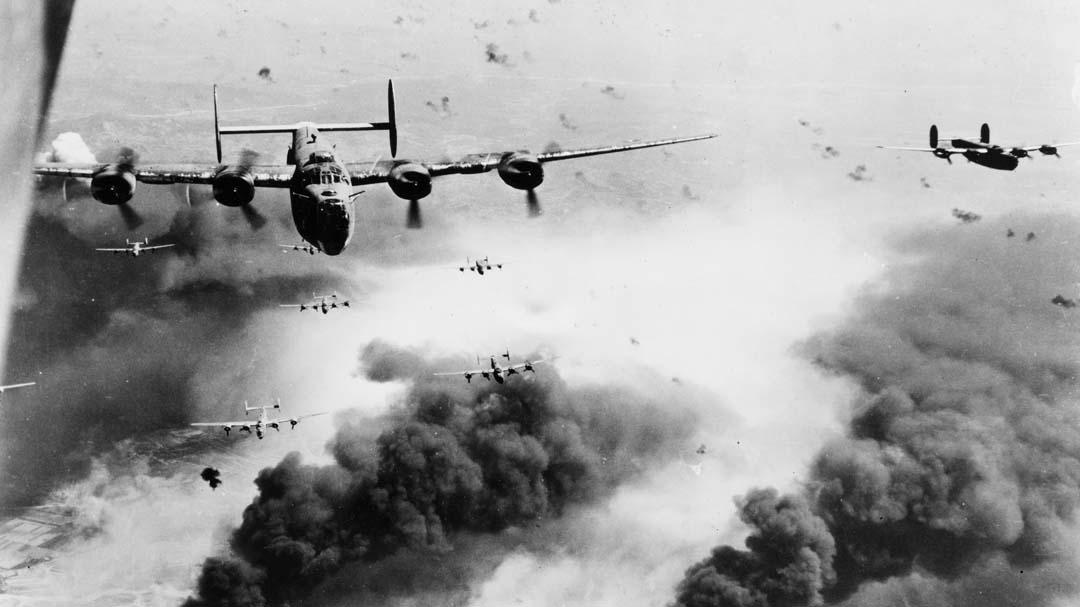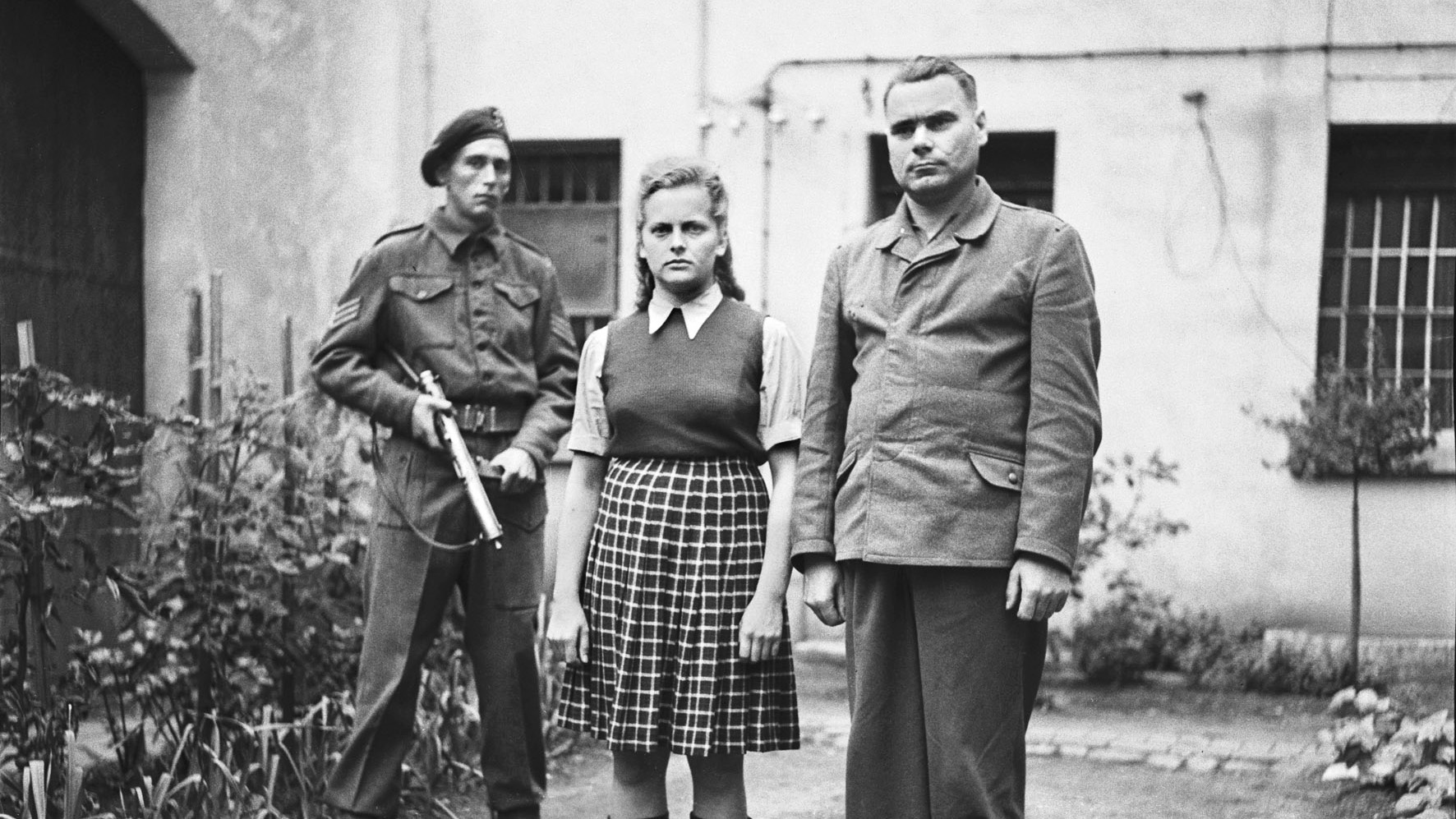By David H. Lippman
“Who are these men? What do they want?” snapped the imperious Field Marshal Sir Bernard Law Montgomery to the four German officers drawn up in front of his caravan, saluting him under a Union Jack. A reporter from Time magazine described Monty as acting “like a householder who took his visitors for tradesmen.” It was the spring of 1945, and the end of Nazi Germany was approaching, but the field marshal was obviously preoccupied.
Standing before Montgomery on North Germany’s Lüneberg Heath were Admiral Hans-Georg von Friedeburg, head of the German Navy; General Eberhard Kinzel, chief of staff to Field Marshal Ernst Busch, commanding the German land forces facing Monty’s troops; Rear Admiral Gerhard Wagner; and Major Jochen Friedel. Friedeburg was cadaverous in a leather greatcoat, while Kinzel, at six feet, five inches, looked the picture of Prussian arrogance, with what Montgomery’s aide called “the cruelest face of any man I have ever seen.”
It was 11:30 a.m. on May 3, 1945, and, despite the arrogance and pomposity in the faces of the Germans, it was the opening scene of the last act of World War II in Europe. The four German officers—a fifth would join them later—were approaching Montgomery to begin the process of Germany’s complete and unconditional surrender.
In actuality, Friedeburg and his crew were not there to surrender. They were standing before Montgomery as part of a desperate last-minute strategy by Germany’s last Führer, Grand Admiral Karl Dönitz. In his will, Adolf Hitler had named the U-boat legend and head of the German Navy as his successor as Reich president. Dönitz certainly had an outstanding war record, compared to the other services—his U-boats were sinking British ships right up to the last days of the war—but more importantly, despite his postwar memoirs and statements by his supporters to make him appear an apolitical naval professional, Dönitz was a loyal Nazi, telling his junior officers, “The Führer is always right.” He supported anti-Semitic measures in Europe and clearing Jews and part-Jews out of the Navy. Dönitz further cast himself as “apolitical” by preventing the top Nazis that Hitler had removed from office from re-joining the new government: SS boss Heinrich Himmler, Luftwaffe chief Hermann Goering, former foreign minister Joachim von Ribbentrop, and a covey of lesser Nazi leaders who had overseen massacres and exploitation across Eastern Europe.
With Hitler’s suicide in Berlin on April 30 and that of the newly appointed chancellor Joseph Goebbels the same day, Dönitz inherited control of the Third Reich. The problem was that there wasn’t much Reich left. Germany had been cut in two by advancing Allied armies, the Soviets in the East and the Americans and British in the West. The U.S. Ninth Army shook hands with Soviet troops with much celebration on the Elbe River. Lieutenant General George Patton’s Third Army was driving into Czechoslovakia, Lt. Gen. Sandy Patch’s Seventh Army detonated the ornate stone Nazi eagle atop the stadium where Hitler held his Nuremberg rallies, French troops conquered Stuttgart, and troops of three divisions—the U.S. 3rd Infantry and 101st Airborne, as well as the French 2nd Armored—all claimed to reach Berchtesgaden, Hitler’s alpine retreat, first. Soviet troops had conquered Vienna, were on the verge of conquering Berlin, and continued fighting against last-ditch determined German defenders in Prague.
On paper, the German Army was a powerful force—six million men and 300 divisions on its chinagraph maps. But three of its army groups were trapped: one in Kurland, another in East Prussia, and a third in the Netherlands. Army Group B in the Ruhr had disintegrated; Army Group C in Italy was in the process of surrendering; Army Norway was stuck where it was; Army Group F was fleeing the Yugoslavs, which had pulled together scattered partisan and guerrilla organizations into a mighty army; Army Group Center was facing revolution in its rear in Czechoslovakia; and Army Group Northwest, facing Monty, was about to collapse.
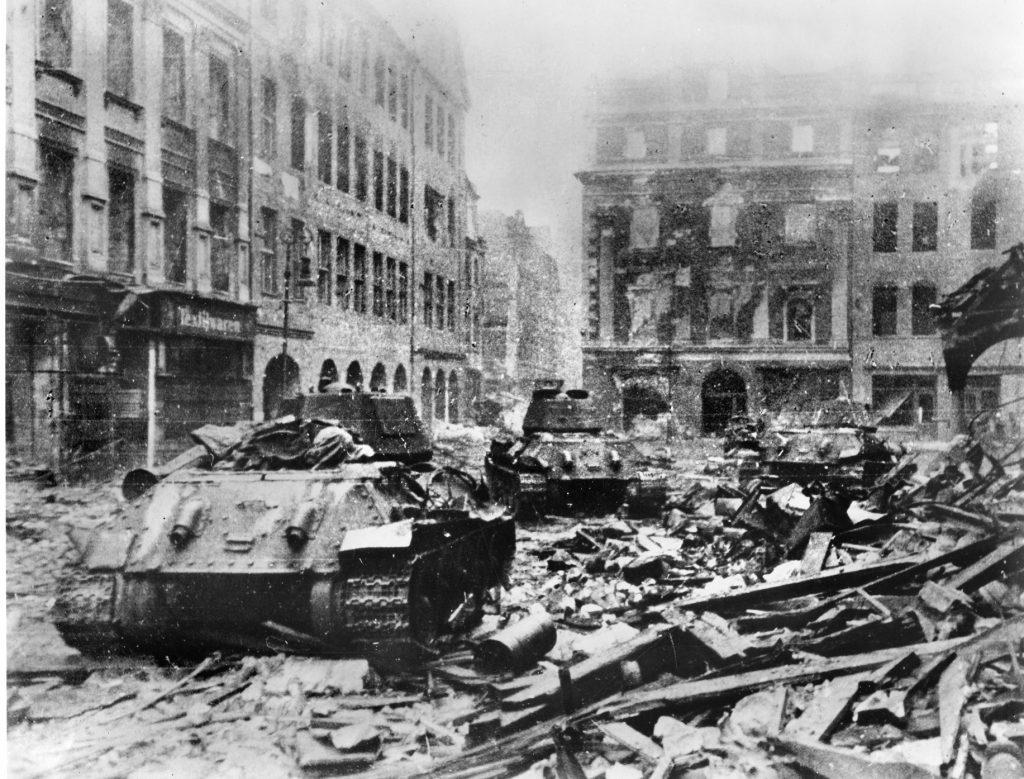
Worse, the Luftwaffe was down to a handful of planes. Propeller-driven aircraft lacked fuel, and the new jets had engine and metallurgy problems that gave them 100-hour lifespans. The Navy was reduced to evacuating refugees from the Baltic to remaining open ports. Virtually all the factories or sources of raw materials had been captured or destroyed.
Dönitz realized he had no way to turn the tide in a war that was clearly lost. His only goal now was to buy time, time for German troops and civilians fleeing the advancing Soviets to reach Allied lines and relative safety. The only way to do that, he and his advisers reasoned, was to offer a series of partial surrenders to the Americans and British, which would include forces facing the Soviets, so that the Americans and British could advance into those sectors and take those surrenders. Indeed, Dönitz himself made that very statement in his proclamation on taking office: the battle against the British and Americans would only continue to save the German people from the Soviets.
The necessity of gaining these truces became greater when Monty’s tanks drove across the Elbe to Lübeck, cutting off Army Group Vistula’s escape route into Schleswig-Holstein. If that army group and all of the civilians trudging along in its wake wanted to reach safety, the army group would have to surrender to Montgomery. However, its forces faced the Soviets, and the Allies had made it clear that all German surrenders had to be to the forces they faced, not the forces they chose to surrender to.
Nonetheless, Dönitz had to do something from his acting capital, the Naval Cadets’ School in Murwik, a suburb of the Schleswig-Holstein town of Flensburg. Despite the reduced circumstances, Dönitz insisted on all the perks of his office. Every morning, a limousine drove him 500 yards from his quarters to his office.
He ordered Friedeburg, his successor as head of the Navy, to start the process of partial surrender, which meant driving to the British-occupied city of Hamburg, now a mass of brooding rubble and stone. From there, he and his crew went on to Monty’s headquarters, which had already learned of German intentions.
Montgomery’s boss, General of the Army Dwight D. Eisenhower, gave firm instructions to his often petulant subordinate that any surrender accepted could only be a tactical one, from the German forces he faced. If Germany as a whole wanted to surrender, that delegation had to report to Ike’s headquarters at the College Moderne de Technique des Garcons in Rheims, sometimes called the “Little Red Schoolhouse.”
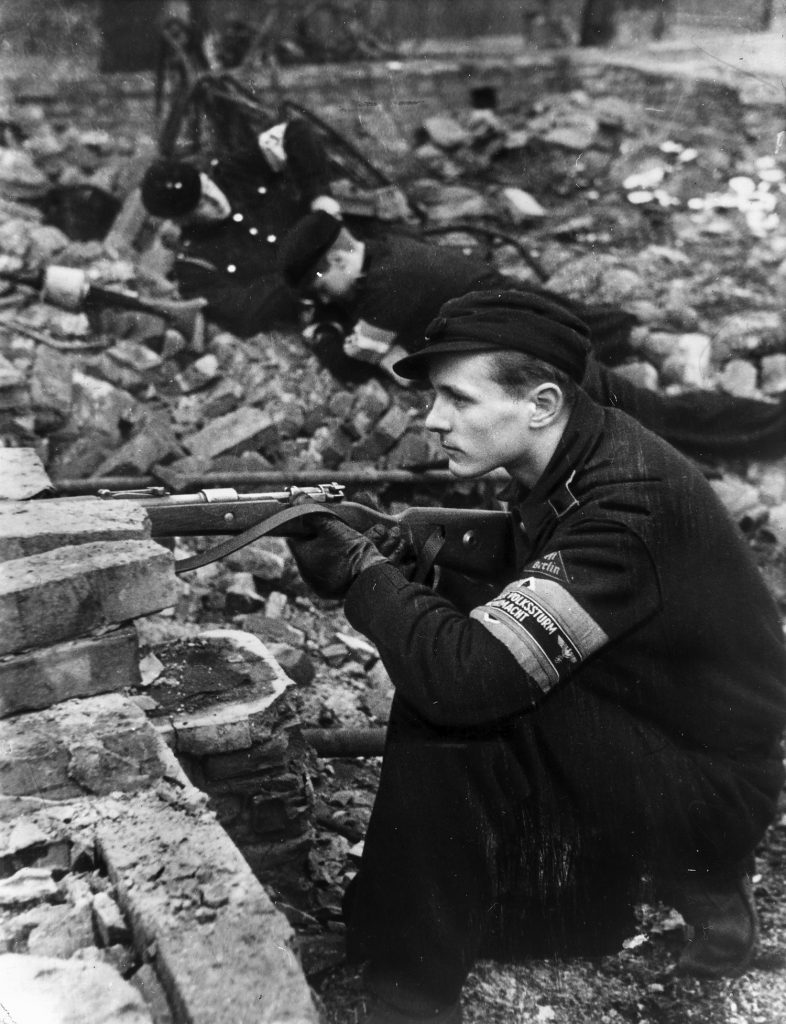
Friedeburg now made his appeal to Montgomery, asking him to accept the surrender of the three German armies retreating toward Mecklenberg from the Soviets and make guarantees to take in these troops and the civilians with them.
“No, certainly not,” Montgomery snapped. “These armies are fighting the Russians, and therefore, if they surrender to anybody, it must be to the Russians. It has nothing to do with me, and I am not going to have any dealings with anything on my eastern flank from Wismar to Domitz on the Elbe, on which flank we are now in closest contact with the Russians. A Russian peace, therefore you surrender to the Russians. Now, the subject is closed.”
The Germans were taken aback by Montgomery’s ferocity. Friedeburg said that surrendering to the Russians was unthinkable. Montgomery shot back, “You should have thought of all these things before you began the war, and particularly before you attacked the Russians.” To add further harshness, Montgomery noted how the Luftwaffe had destroyed the British city of Coventry in 1940.
Then Montgomery sprang something else on Friedeburg: an offer to accept the surrender of all Germans between Lübeck and Holland and the northern flank, which would save civilian lives in battle areas facing Montgomery.
The Germans tried again, offering staged retreats while the British advanced slowly toward the Soviet lines.
“No. There is nothing to do. I am not going to discuss any conditions at all as to what I am going to do. I wonder whether your officers know what the battle situation is on the Western Front. In case you don’t, I will show it to you,” Montgomery answered.
The field marshal whipped out a battle map that showed the situation, which shocked the Germans greatly. “That put them in ripe condition to receive a further blow,” Montgomery wrote later.
He decided to let them ponder the harsh reality by offering them lunch—under a British officer’s eye. The Germans pronounced the British food excellent, compared to what they had been eating. The British officer, to hammer home Monty’s points about Germany’s parlous situation, said it was mediocre stuff, mere field rations.
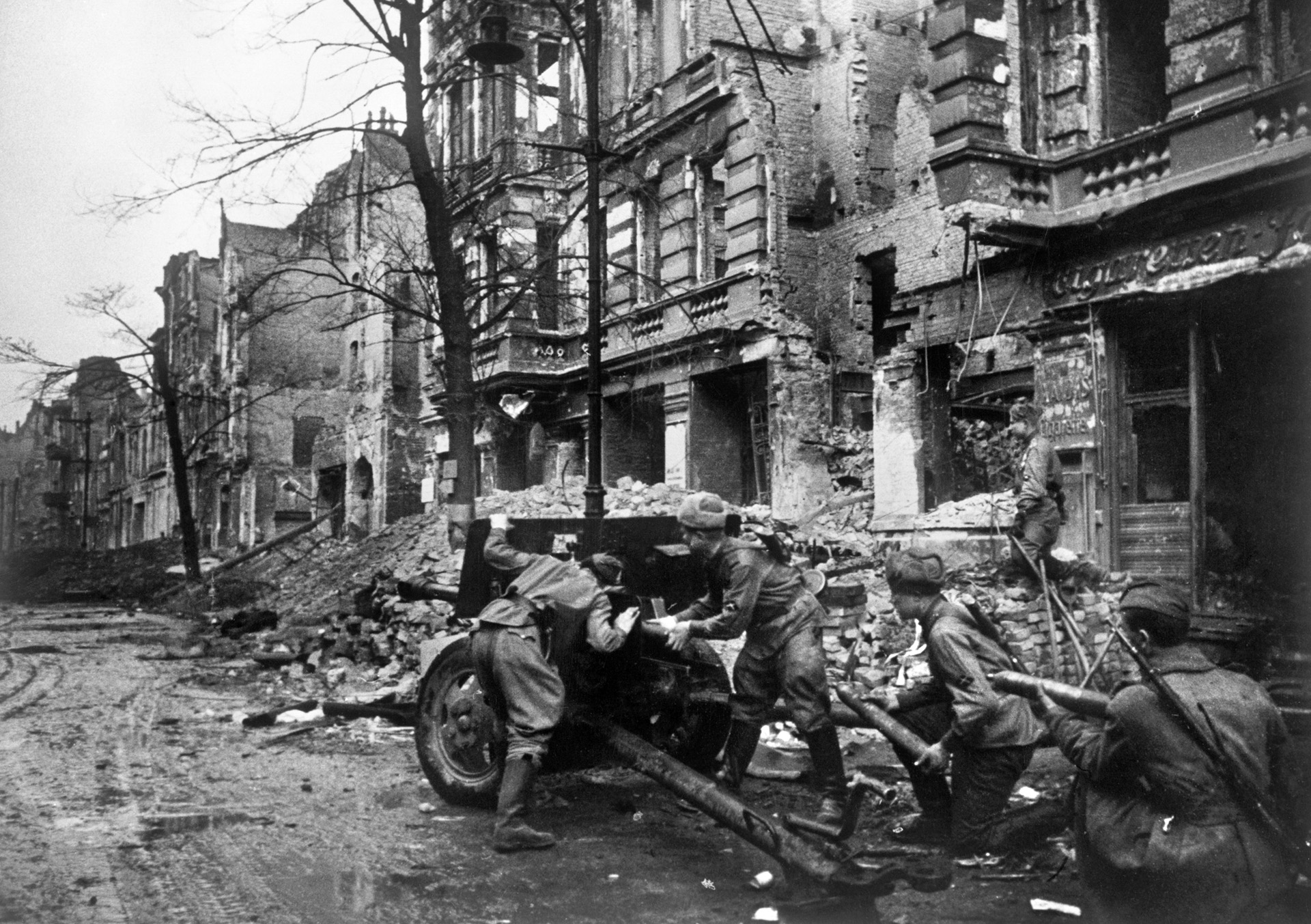
After lunch, Montgomery summoned Friedeburg and his crew back and told them to understand three points: first, the Germans must surrender all forces in Holland, Friesland, the Frisian Islands, Heligoland, Schleswig-Holstein, and Denmark. Second, once that was done, Monty would discuss the implications of that surrender, including dealing with civilians and the disposition of German forces. Third: “If you don’t agree to point number one, I shall go on with the war and will be delighted to do so and am ready. All your soldiers will be killed. These are the three points—there is no alternative—one, two, three, finished!”
Friedeburg told Montgomery he had no power to accept those points, but he could take them back to Dönitz for review. Montgomery wrote them out, then Friedeburg and Canadian Colonel Trumbull Warren, one of Monty’s liaison officers, headed back to Flensburg and Dönitz to hash out the situation. Warren went no further than the British front lines.
The following day, May 4, Friedeburg drove through the outposts of the legendary 11th Hussars to accept Monty’s demands. Dönitz and his top advisers had argued most of the night over the points, with the military concerned that Montgomery’s orders would insult their honor, while the civilians were ready to accept the terms to end the pointless fighting. Emotionally, Dönitz sided with the military, but he recognized that more bloodshed was useless.
Friedeburg returned with Warren to Montgomery’s headquarters, arriving at Lüneberg Heath around 5 PM. Montgomery had ordered his artillery to cease fire with surrender so close, so the only sound was wind battering the plain.
The Germans entered a tent full of Monty’s staff officers and war correspondents, finding the field marshal sitting at an ordinary Army trestle table, covered with an Army blanket, inkpot, and “ordinary Army pen that you could buy in a shop for two pence,” Montgomery wrote. He was relaxed. The Germans were not. One lit up a cigarette. Monty looked at him harshly, and the German put it away.
Montgomery read off the terms in English, slowly and steadily, and then called up each German, in turn, to affix their name. He signed last. In a few minutes, it was all over. Montgomery was supposed to send the original surrender document to Eisenhower in Rheims, but instead sent a photostat. He kept the original, and it is now on display in the Imperial War Museum. The pen, however, disappeared. “I suppose someone pinched it,” Montgomery wrote.
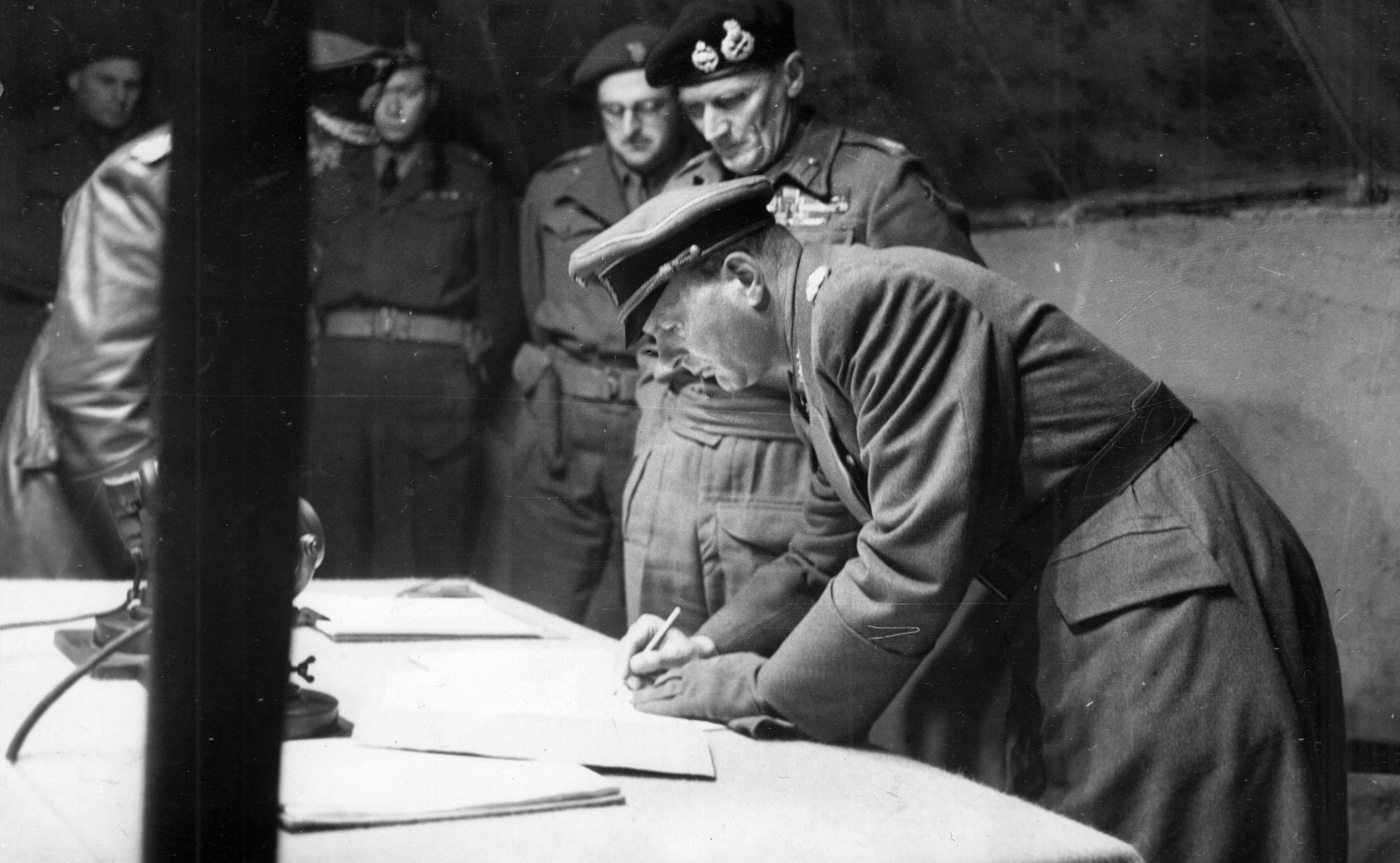
With that surrender in hand, more surrenders followed. Up next was the surrender of the German 19th Army in Innsbrück, Austria, on May 5, to the U.S. 44th Infantry Division. Army Group G threw in the towel the same day at Baldham, Germany, to the American VI Army Group. The 102nd Infantry Division took the surrenders of two German armies by itself.
On May 5, the Netherlands’ suffering formally ended at Wageningen, where Canadian I Corps commander Lt. Gen. Charles Foulkes and Prince Bernhard of the Netherlands took the surrender of Col. Gen. Johannes Blaskowitz in the Hotel De Wereld, 10 miles west of Arnhem, the scene of bloody fighting in September 1944.
As the Allies negotiated food deliveries to the German-occupied areas, Eisenhower’s chief of staff, Lt. Gen. Walter Bedell Smith, met with the sinuous Artur Seyss-Inquart, Germany’s civilian ruler of the Netherlands, who refused to accept unconditional surrender, as it would stain his standing in the eyes of future Germans. Smith retorted that he would hold Seyss-Inquart responsible for further useless bloodshed, adding in frustration, “Well, in any case, you are going to be shot.”
“That leaves me cold,” Seyss-Inquart said softly.
“It will,” Smith answered.
A more pleasant encounter between victor and vanquished in the Netherlands area took place when Maj. Gen. Friedrich von Straube, out of touch due to communications breakdowns, surrendered personally to Canadian Brigadier James Roberts on May 5. The Canadian drove von Straube to Canadian 2nd Corps headquarters for the ceremony, after which Roberts took von Straube back to his own headquarters so that he could get started on disarming his troops and forming them up to go into captivity.
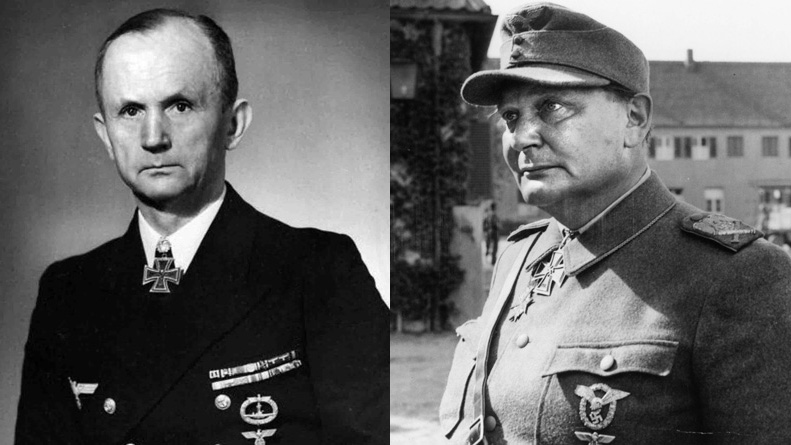
After 20 minutes of driving in silence, a German staff officer tapped Roberts on the shoulder and said von Straube wanted to know what he had done before the war. The general himself asked, “Were you a professional soldier?”
Roberts dug deep into his mind all the way back to 1939, and finally remembered. “No, I wasn’t a regular soldier,” he answered. “Very few Canadians were. In civilian life, I made ice cream.”
Back at Lüneberg, signalers tapped out, “All call-signs from Sunray. Cease fire,” to advancing British forces. They were followed by messages from Montgomery to his men, thanking them for their service and valor. British troops kept advancing, seizing Kiel and the factories where Germany’s latest U-boats were being built. Royal Navy intelligence officers scrutinized newly finished U-boats and rows of midget submarines, fascinated by what they saw.
Monty’s aide-de-camp, Colonel Charles Sweeney, was one of the last casualties, killed in a car accident, which devastated “The Master,” as Monty’s inner staff called him.
Most importantly, Montgomery bundled Friedeburg and his party on a C-47 Dakota transport plane to take them to Eisenhower’s headquarters in Rheims to surrender all of Germany.
In Rheims, it was raining when word came in of the surrender at Lüneberg Heath. Time magazine’s Charles Wertenbaker wrote: “The gray-frayed clouds hung so low that they seemed to touch the chimneys … Smoke from locomotives in the railroad yards sped slowly across the street and through the open windows of the École Technique.” The wait went on all day: the Germans did not arrive at the school until 5pm.
Despite his exhaustion from the strain of the previous weeks and days, Eisenhower found the energy to send a message to British Prime Minister Winston Churchill, honoring the courage and determination of the British people through six years of war.
Ike also wrote a letter to his wife, Mamie, noting the “trying times … The enemy’s armed forces are disintegrating, but in the tangled skein of European politics, nothing can be done except with the utmost care and caution where the interests of more than one country are involved … I was wide awake very early with nothing decent to read. The Wild Wests I have been reading are terrible. I could write better ones left-handed.”
At the “Little Red Schoolhouse,” Eisenhower’s top staff set up to receive Germany’s surrender in the War Room, a 30-foot-square area with pale blue walls covered with campaign maps. These included the day’s air operations, casualty lists, supplies, weather reports, and the mounting total of German POWs accumulated.
A phalanx of news photographers clutching immense Speed Graphic cameras entered the room now, waiting for the big moment. It turned out to be a bit of an anti-climax. Friedeburg, looking pale and tired, faced Bedell Smith and Britain’s Maj. Gen. Kenneth Strong, head of intelligence and a fluent German speaker, to negotiate. Eisenhower refused to meet any German general until they had surrendered. Friedeburg once again asked his counterparts for a partial surrender, so that Germany (hopefully with Allied support) could continue to fight the Soviets.
With Strong interpreting, Smith told Friedeburg that could not happen. The dismayed admiral told Smith that he had no authority to sign a general surrender of Germany. Smith told Friedeburg to get in touch with Dönitz in Flensburg. An equally dismayed Eisenhower hit the sack, having barely slept for days.
Meanwhile, the Americans and British kept the Soviet leader, Josef Stalin, aware of developments. Knowing his ego and paranoia, Ike recommended that a senior Russian officer on the Allied side sign the surrender for the Soviet Union. In addition, he insisted that the Rheims surrender be quickly followed by another one the following day at Soviet headquarters in Karlshorst in Berlin, as the final, legal surrender of the prostrate nation. Eisenhower agreed, seeing Stalin’s point.
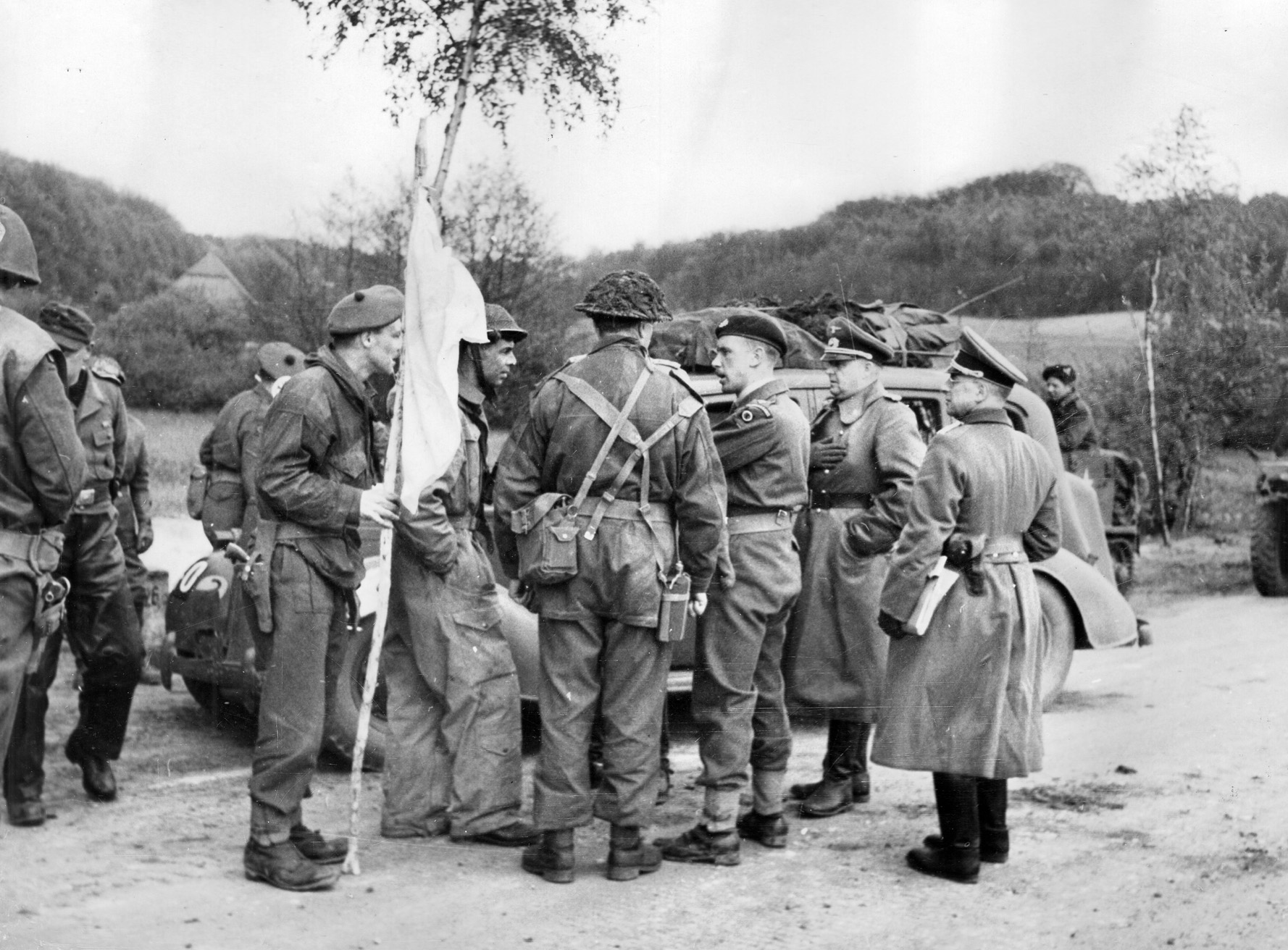
Major General Ivan Suslaparov was at Rheims already as Soviet liaison to Allied forces. He had commanded the 10th Army in battle against the Germans and represented the USSR at the surrender in the Netherlands, so he was a veteran of both combat and negotiation with the Germans.
The Soviet high command approved his presence as Russia’s signatory, while insisting that the surrender apply to all fronts where the Germans were fighting. As that was precisely Eisenhower’s aim, that condition was also not a problem.
Meanwhile, in Flensburg, Dönitz faced the hard facts and the latest message from Friedeburg on the morning of May 6. With destruction continuing with the relentless Allied advance, there was only one option left to save the German people, general capitulation, perhaps in two stages: an end to hostilities that would let German troops move into the Western zones, followed four days later by the surrender of all German troops.
To negotiate this and sign the surrender, Dönitz sent Col. Gen. Afred Jodl, the popeyed but capable chief of the general staff to Rheims. He arrived late on May 6 and strode arrogantly from a staff car into the “Schoolhouse.” An American military policeman in white helmet snapped a salute, and Jodl and Friedeburg saluted back in the pre-Hitler style.
The German delegation entered the map room, but there was no salute from any of the Allied military men he outranked. Jodl exclaimed, “Ah hah.” Jodl was taken to Smith’s office, where the German presented his case to Smith and Strong. They in turn took it to Eisenhower.
Beneath the legendary Eisenhower grin was a man of ferocious temper, and now he showed it. Convinced the Germans were stalling against the inevitable, Ike snapped at Smith, “You tell them that 48 hours from midnight tonight, I will close my lines on the western front so that no more Germans can get through, whether they sign or not, no matter how much time they take.”
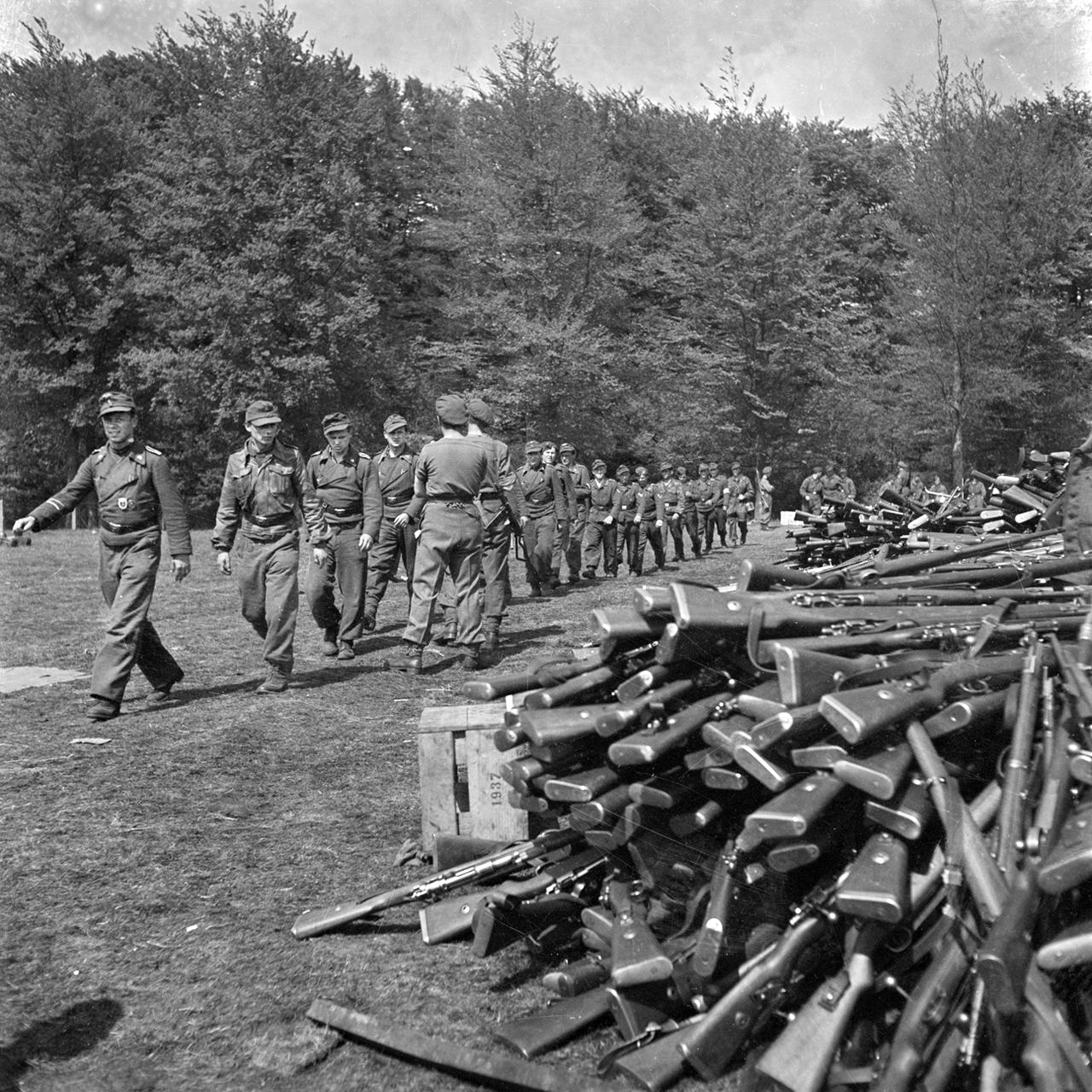
That proved effective. Jodl contacted Dönitz and was told to surrender. Now preparations moved into full gear. Ike’s headquarters already had documents prepared for this occasion. They merely required some re-typing to accommodate the signers’ names. U.S. Navy Commander Harry Butcher, a prewar radio executive now serving in Ike’s public relations team, was made “supervisor of the fountain pens” and ordered to make sure the two Parker pens were saved. One was to go to President Harry Truman, the other to his Ike’s old friend Kenneth Parker of the pen-making dynasty, who had requested months ago that he get one of the pens used in the surrender.
Butcher pointed out to Eisenhower that it might be a good idea to provide a pen to Churchill, and Ike said, “Oh, Lord, I hadn’t thought of that.” Butcher had to find another pen.
The bigshots assembled in the War Room. General Carl Spaatz, top U.S. airman in Europe; Britain’s General Sir Frederick Morgan, who had written the D-Day plan; British Admiral Harold Burrough, commanding all naval forces in Europe; General Francois Sevez, representing France; Smith, Strong, and other top-ranking officers, along with 17 reporters from the pool. There was one microphone and one film camera to cover the surrender.
Friedeburg and Jodl took their seats, and Strong stood behind them, presenting them with the surrender documents. Before Smith could speak, Butcher presented the Germans with a solid-gold fountain pen. Smith told the Germans that the surrender awaited signature and asked if they were prepared to sign. Jodl gave a slight nod. With the gold pen, he signed the first of two surrender documents. Butcher grabbed the gold-plated pen and substituted one he had been given by newsman Charles Daly in Algiers to sign the second one. That one would go to Parker, despite the fact that it was made by Parker’s competitor, Sheaffer Pens.
After Jodl had scrawled his last name on both documents, he snapped to attention and addressed Smith in English: “I want to say a word.”
Smith granted the request. In German, translated by Strong, Jodl said, “General! With this signature, the German people and German armed forces are, for better or worse, delivered into the victor’s hands. In this war, which has lasted more than five years, both have achieved and suffered more than perhaps any other people in the world. In this hour, I can only express the hope that the victor will treat them with generosity.”
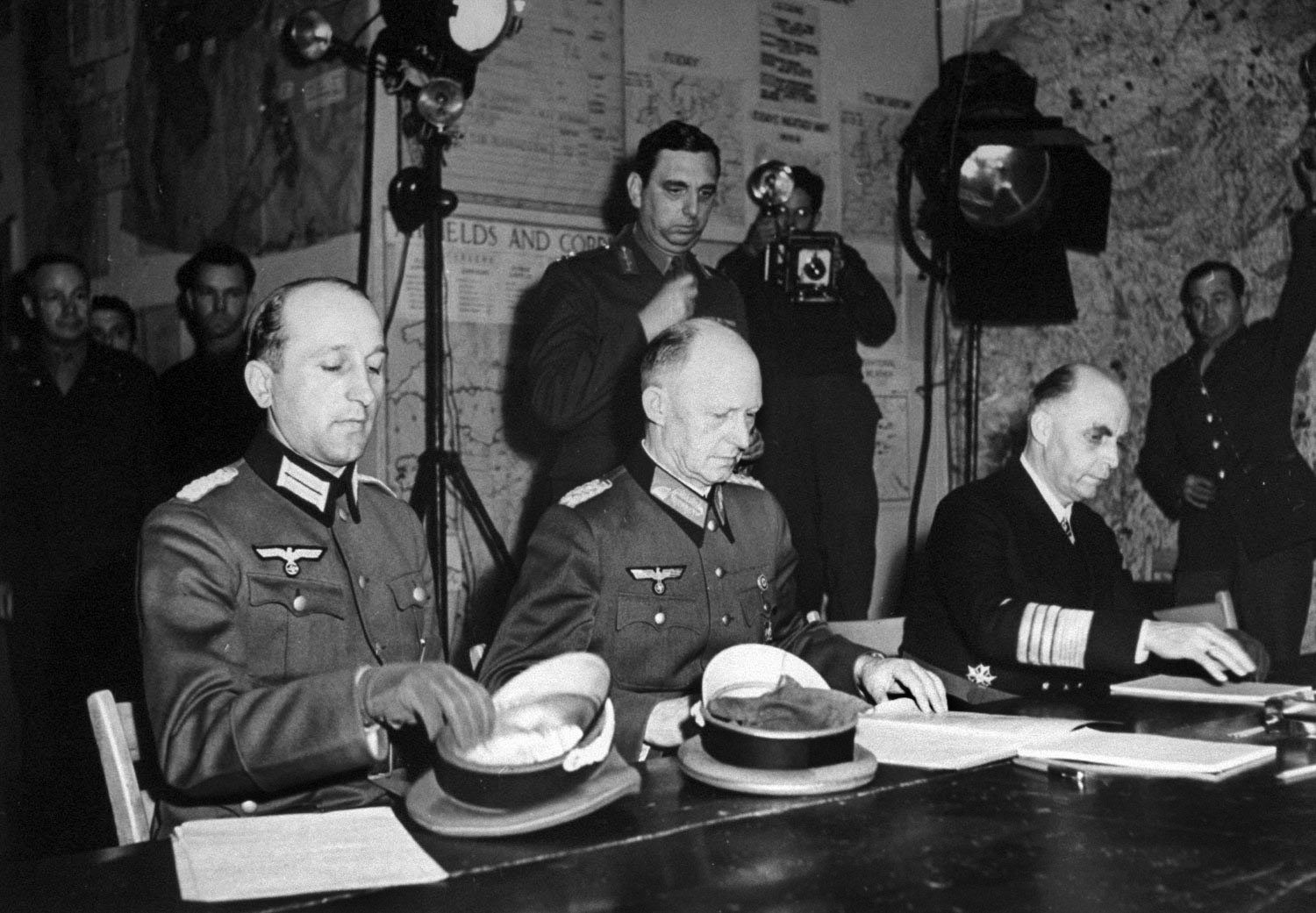
It was 2:41 AM, British Double Summer Time on May 7, 1945. The surrender would go into effect at 11:01 AM on May 8.
Now Jodl was brought to Eisenhower’s office, where Ike sternly asked the German if he and his team understood the terms and whether they were prepared to execute them. Jodl answered, “Ja.”
Eisenhower then said, “You will, officially and personally, be held responsible if the terms of this surrender are violated, including the provisions for German commanders to appear in Berlin at the moment set by the Russian high command to accomplish formal surrender to that government. That is all.”
Jodl saluted and left.
Ike held up the two gold pens and Butcher’s Sheaffer in a “V for Victory” gesture, and, surrounded by the men who had taken the surrender, broke out the broad grin that Churchill said was “worth 10 divisions.” Eisenhower then made a short broadcast for radio and newsreels to announce the surrender.
Next, Eisenhower sent messages to his army group commanders letting them know of the surrender and ordering them to hold in place. There was no sense in taking any more casualties now. One such recipient, General Omar N. Bradley, got the word at his headquarters that morning of May 7. Five years to the day before, he wrote later, Bradley had been a lieutenant colonel in civilian clothes riding a bus down Connecticut Avenue to his office in the old Munitions Building in Washington, D.C. Now, he commanded 43 divisions in four armies.
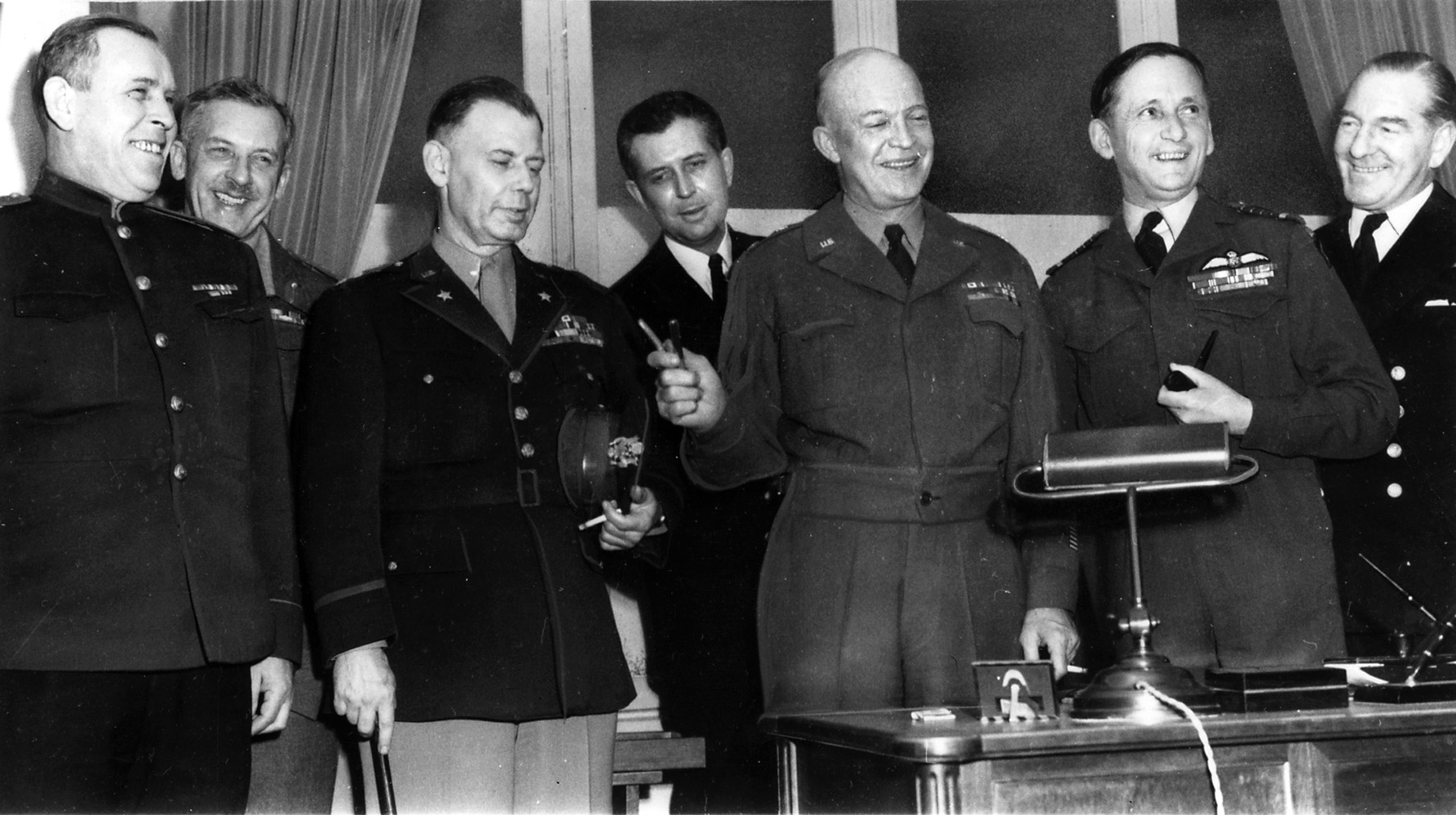
One more duty remained: sending a message to the Allied capitals and leaders that Germany had surrendered. Ike’s staff played around with a number of grandiose and grandiloquent messages, but Eisenhower dictated his own message in his own straightforward style: “The mission of this Allied force was fulfilled at 0241 local time, May 7, 1945.”
Ike’s mission was finished, but the Germans who had surrendered were not done yet. On the morning of May 8, they flew to the Soviet headquarters in Karlshorst, just outside of Berlin, for the final surrender. A different cast of senior characters would make and take this surrender. The Soviet representative was 1st Belorussian Front commander Marshal Georgy K. Zhukov, who had driven German troops back from Berlin to Moscow. Representing Britain would be Air Marshal Sir Arthur Tedder, the deputy supreme commander. General Spaatz represented the United States, and General Jean de Lattre de Tassigny was there for France. The Germans sent the Luftwaffe’s General Hans-Jurgen Stumpff, Field Marshal Wilhelm Keitel, the head of the Oberkommando Wehrmacht, and Friedeburg again, to sign his third surrender. When what was left of the German government was arrested on May 23, he would commit suicide.
At the ceremony, Keitel was shocked to see a French representative for some reason and muttered, “The French! That’s all we need!”
There wasn’t much to discuss at this point, beyond punctilio. The Soviets were not happy about having the French sign to accept the surrender, given their lower-level role in the war. It was decided that Zhukov and Tedder would accept the surrenders, as representatives of the Eastern and Western commands, while Spaatz and de Lattre would be “witnesses.”
The Soviet headquarters was the former German Army Engineering School, which had somehow remained undamaged in the battle. It would become the Soviet Army’s headquarters in the postwar occupation.
At 11 PM on the 8th, Zhukov called the meeting to order and summoned the three Germans with their aides. Tedder asked, “Have you received the document of unconditional surrender? Are you ready to execute its provisions?”
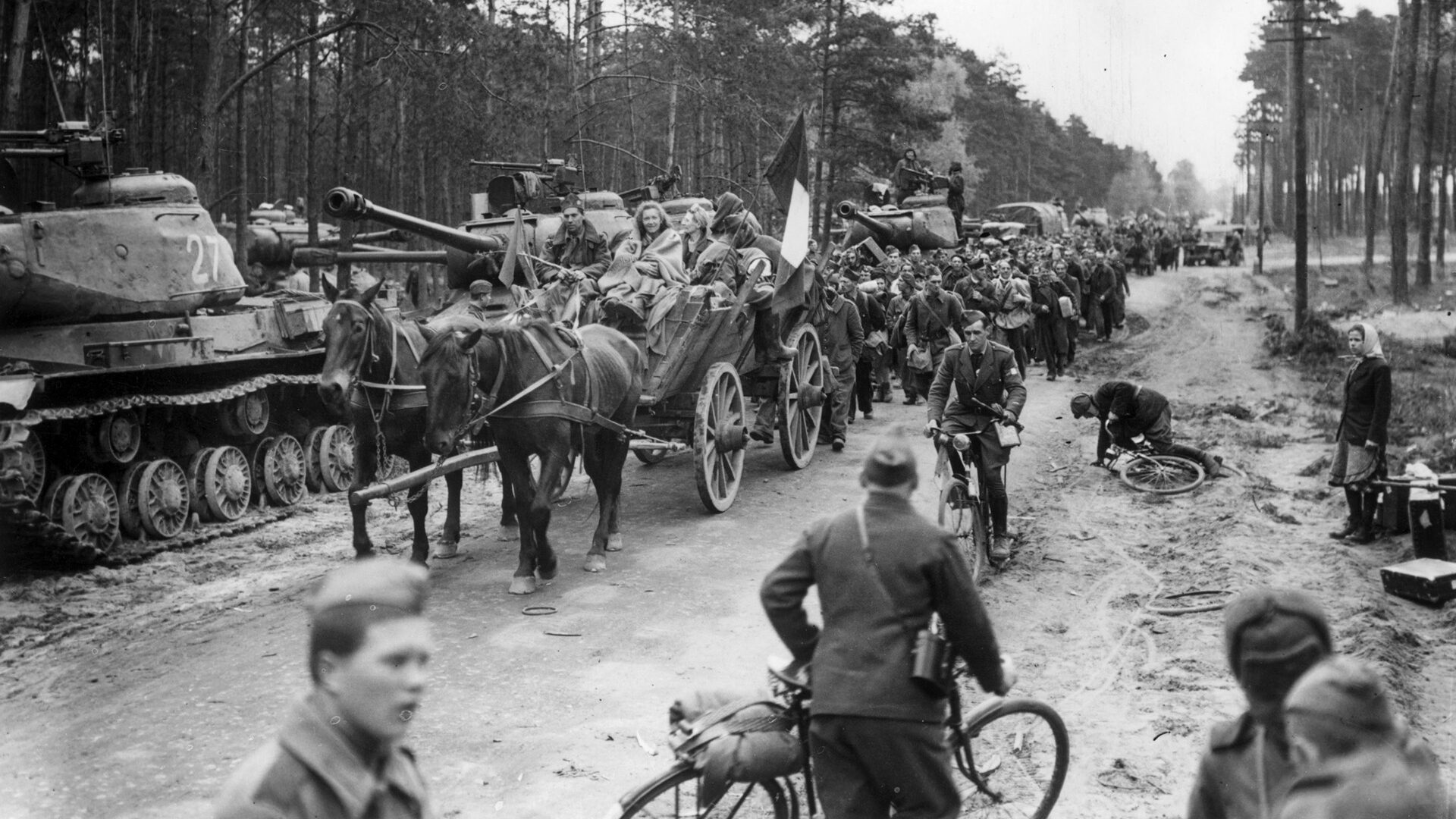
“Ja. In ordnung,” Keitel responded, screwing his monocle into his left eye and removing a glove. He placed his immense field marshal’s baton on the table and signed the document, his face a mask of disdain, contempt, and arrogance. He wore his National Socialist Party golden emblem as he did so. Once finished, Keitel saw his aide, Lt. Col. Karl Brehm, in tears. Keitel said dryly to Brehm, “You can make your fortune after the war writing a book about this, ‘With Keitel in the Russian camp.’”
The Allied leaders followed, with a comic moment. Neither Spaatz nor de Lattre had a pen. The war was officially over as of that moment, and the three powers would make the announcement on May 9, making that V-E Day, in theory.
Meanwhile, beyond Ike’s headquarters, the war was sputtering out with a mix of violence, horror, and comedy. Allied troops struggled to care for sick and dying ex-prisoners in newly-liberated concentration camps. Defiant SS men hauled other prisoners out of their camps and took them on death marches deep into German lines. Any one of the starving inmates who fell out of the columns was gunned down. Hitler Youth armed with one-shot Panzerfausts—the world’s first disposable anti-tank weapon—and filled with Nazi ideology took potshots at passing American and British vehicles, determined to take one GI or Tommy down with them.
All across Europe millions of ex-prisoners trekked hither and thither seeking their lost family members, homes, or just another meal. In most cases, they would find none of the above and wind up in Allied camps as “displaced persons.” In a bizarre irony, some of the camps were erected by German POWs and were near the sites of liberated concentration camps. There, workers of the United Nations Recovery and Rehabilitation Agency struggled through linguistic difficulties, supply shortages, and bureaucratic nightmares to provide their charges with basic needs, medical care, connections to missing relatives, and hope for a new life.
Fighting continued in Prague and other Czech cities, where an army of Russian renegades under General Andrey Vlasov switched sides for the second time in the war to support the Soviets and Czechs seeking to defeat the Germans. The Vlasov army of about three divisions was hoping that by joining the Allies they could avoid certain treason trials and execution at the hands of Stalin. They helped defeat defiant Nazi forces, but most of the Vlasov troops and other renegade Russians who had fought for Hitler—in some cases with their families—would be forcibly shipped back to the Soviet Union and the waiting gulags.
In Breslau, besieged by Russian forces, gauleiter Karl Hanke, who commanded German defenses that had been holding out for weeks, delivered a defiant speech and then deserted his troops by plane and was never heard from again. Another German commanding officer told his artillery regiment that it was “every man for himself … Get home as best you can.” Everybody took off their rank badges, and those with horses rode off, while gunner Gottfried Selzer walked to American lines.
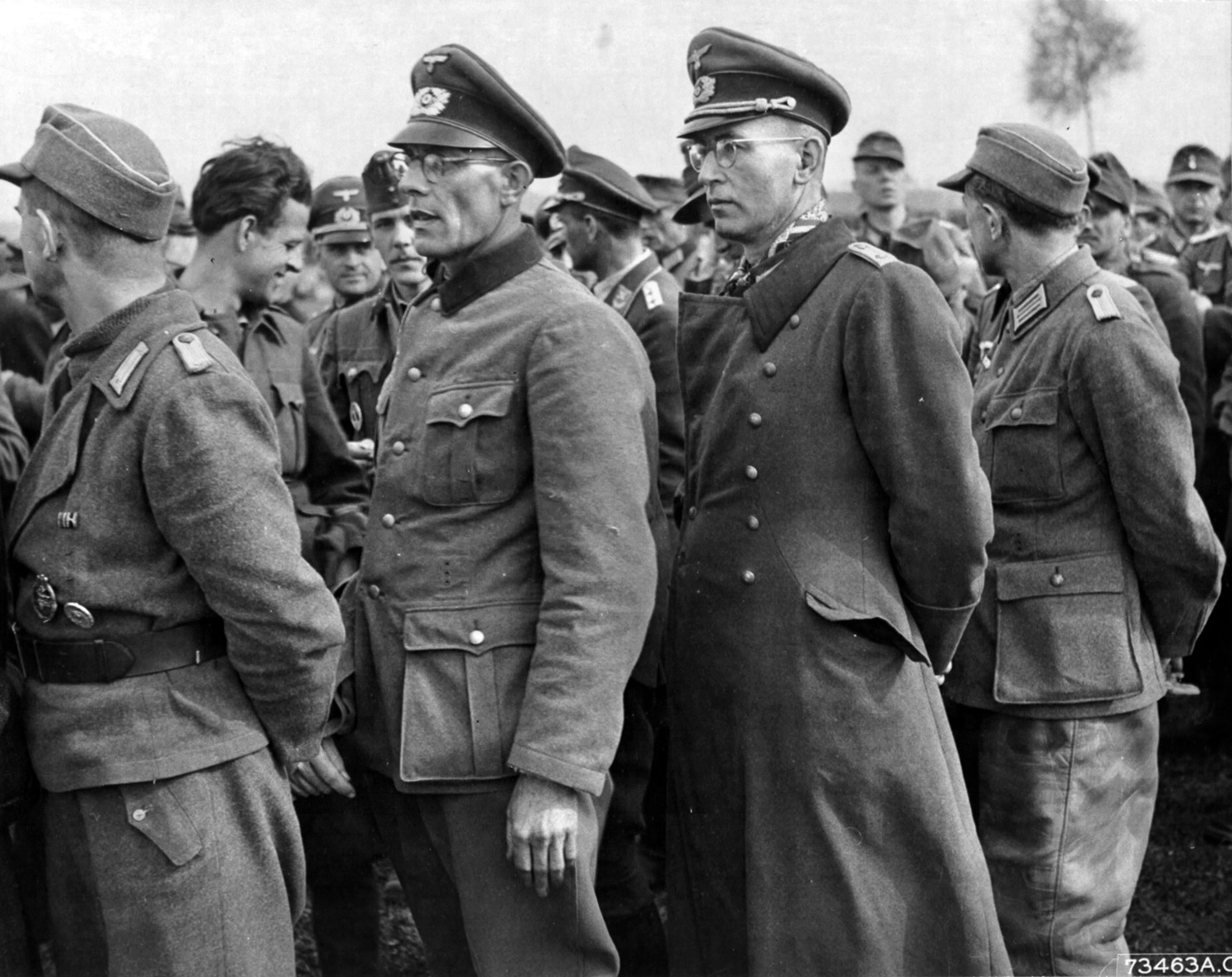
Another German officer was behind American lines—Reich Marshal Hermann Göring— who surrendered to Maj. Gen. Robert Stack and the 36th Infantry Division. Stack and his senior officers treated the disgraced Luftwaffe chief to liquor and cigars at their officers mess and then presented him to Allied war correspondents at a press conference. At the press briefing, Göring alternated between his prewar joviality and the late-war despair of a man who had lost political power and public support, and was now addicted to codeine.
Eisenhower, infuriated that such a major war criminal was being treated like an honored guest, ordered Göring stripped of his fancy uniform and treated like an ordinary POW, pending transfer for his war crimes trial. Among the items taken were suitcases full of codeine and his immense and unique reich marshal’s baton, which became an exhibit in the museum at West Point.
In the village of Niemegle, German troops trudge along in a state of exhaustion and stared at euphoric children dancing in the streets. A local candy factory had given out all its stocks ahead of the Russian advance, and the kids were making the most of the largesse.
The Allies also had the problem of timing the announcement of surrender and peace. They agreed that it should be made by Churchill, Stalin, and Truman simultaneously, so that it would come from the top and emphasize Allied unity on the morning of May 9. To that end, Eisenhower’s public relations chief, Brig. Gen. Frank “Honk” Allen, slapped an embargo on the press corps at Rheims, which they all agreed to honor.
All, that is, but the Associated Press’s Ed Kennedy, head of the wire service’s European war coverage, who regarded his scoop as being greater than an embargo. He got on a line to London and dictated his story, which arrived in AP’s Rockefeller Center headquarters in New York at 9:27 on the 8th. It took AP’s top brass only eight minutes to decide to send the bulletin on to their 2,500 worldwide clients. It took a little more time for Eisenhower and Allen to explode and declare the story “unauthorized” and strip an unrepentant Kennedy of his credentials, shipping the Brooklyn-born reporter back to the United States.
But the damage was done. For Britain, France, the United States, and many other Allied countries, V-E Day was May 8, even though the Germans had yet to sign the final surrender. Newspapers printed extra editions and radio stations spread the cheering news.
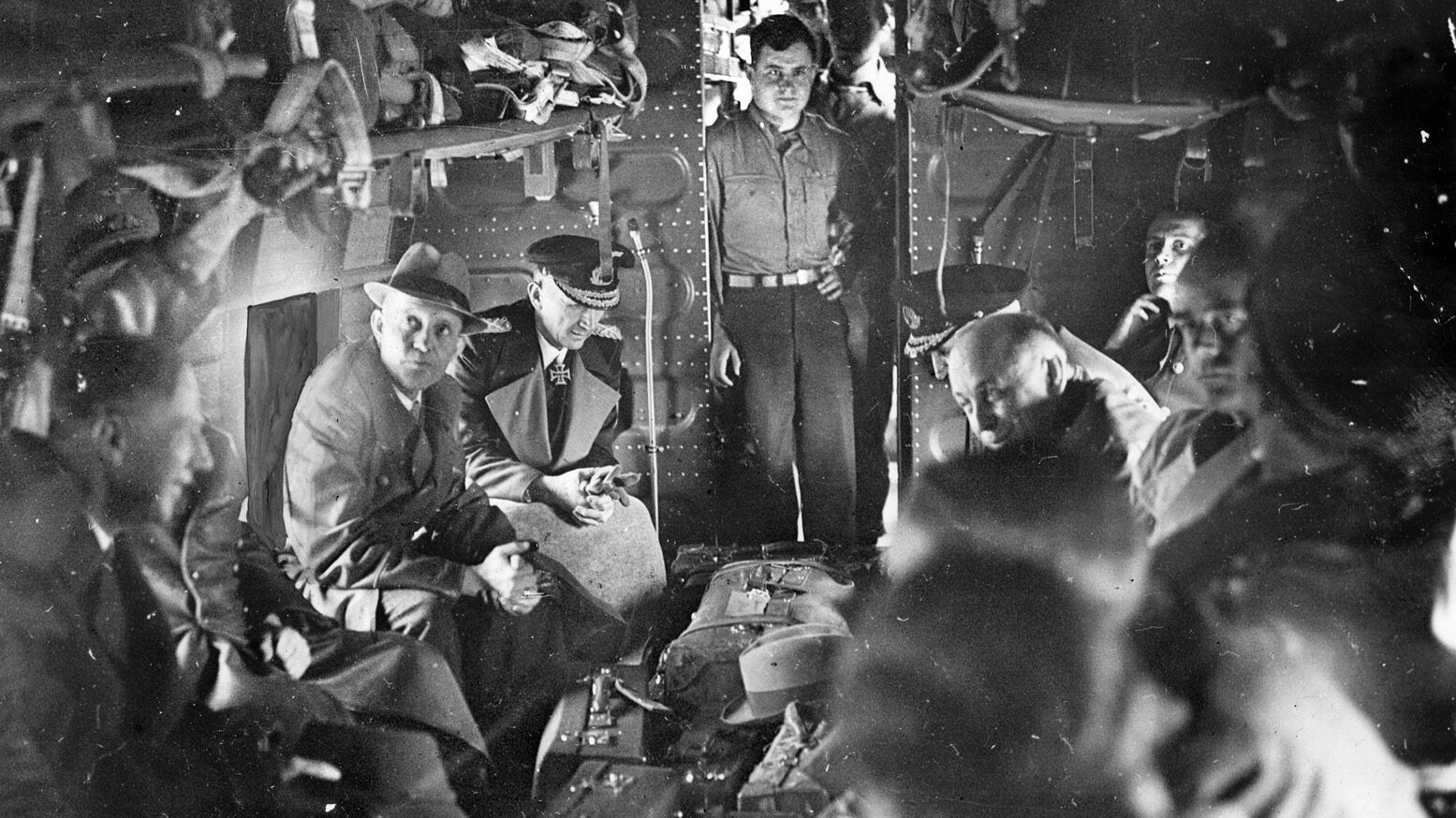
In New York’s Times Square, half a million people poured out of office buildings to celebrate before a replica Statue of Liberty that had been placed in the square to sell War Bonds. Londoners jammed Piccadilly Circus, tore down their hated blackout curtains, and enjoyed searchlights illuminating Buckingham Palace, Big Ben, and St. Paul’s Cathedral, which aimed their beams into “V for Victory” formations.
The Allied leaders had to follow the wire service’s lead. Winston Churchill walked through cheering crowds to Parliament to announce the news, giving his victory sign.
His address was as powerful as ever, in which he exulted, “Finally, almost the whole world was combined against the evil-doers, who are now prostrate before us … Advance Britannia! Long live the cause of freedom! God save the King.”
King George VI himself gave a powerful speech at 6 PM, saying, “Today, we give thanks to Almighty God for a great deliverance. Speaking from our empire’s oldest capital city, war-battered but never for one moment daunted or dismayed—speaking from London, I ask you to join with me in that act of thanksgiving … Let us remember those who will not come back … the men and women in all the services who have laid down their lives.”
After that, he and the royal family, with Princess Elizabeth in her Auxiliary Territorial Services uniform, joined by Churchill himself, greeted crowds from the Buckingham Palace balcony. The future queen and her sister, Princess Margaret, later went through the streets, joining the crowd in Green Park, and then went back to the palace. “I think it was one of the most memorable nights of my life,” she said five decades later.
The celebration was memorable for future playwright Harold Pinter as well, then aged 15. In that crowd, he pinched the bottom of a girl in front of him, only to be slugged unconscious by her soldier boyfriend.
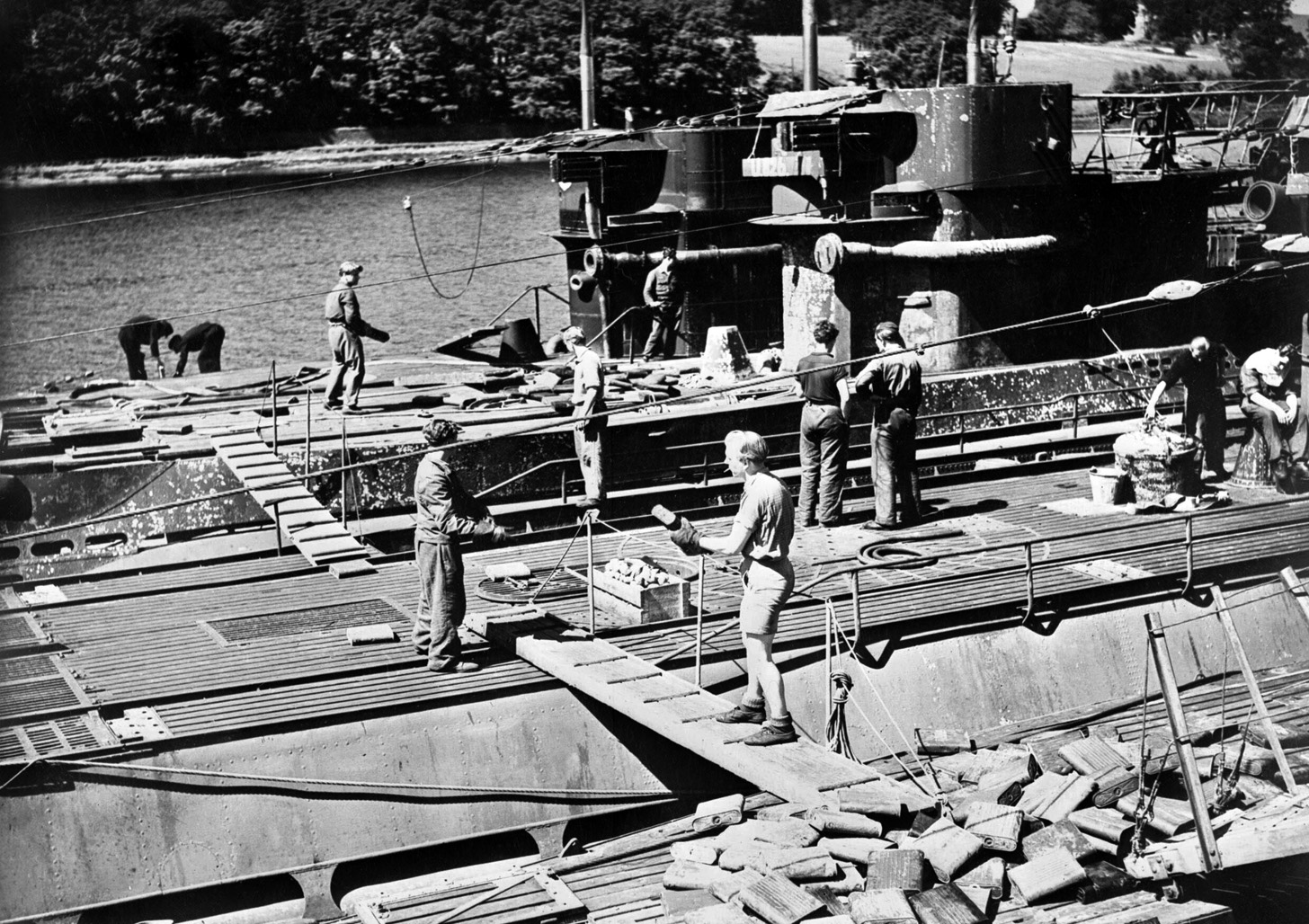
In Washington, President Harry S. Truman, turning 61 that day, spoke to the American people, saying, “This is a solemn but glorious hour. I only wish that Franklin D. Roosevelt had lived to see this day. General Eisenhower informs me that the forces of Germany have surrendered to the United Nations. The flags of freedom fly all over Europe.”
On the Elbe River, GIs and Tommys met Soviet frontoviki for the first time and struggled through language barriers to celebrate. Soviet troops were delighted by Wrigley bubble gum, Mickey Mouse watches, and Players cigarettes. American and British troops were astonished at how Soviets would whip out accordions and start singing and dancing and how the Russians would go into battle wearing no helmets, but all their medals.
At Luftwaffe bases, German “black men”—their name for ground crews—removed propellers and drained fuel from aircraft, lining them up so that the British and Americans could properly inventory them. “That was the end of all our dreams,” wrote one fighter pilot. Another fighter commander thanked his men for their sacrifices for Volk und Vaterland, then led them to a British POW camp.
On the other hand, Lieutenant Hermann Gern, a fighter pilot, got busy hatching a plan with Sergeant Franz Keller to steal a Bf 108 two-seat trainer and fly from their base in Schleswig-Holstein back home to Southern Germany. They talked too much, were court-martialed on May 4, on charges of desertion, and Gern was executed by a 10-man firing squad on May 7.
Another Luftwaffe pilot, Hans-Ulrich Rudel, a Stuka dive bomber ace who had blasted hundreds of Soviet tanks and sunk a Soviet battleship, surrendered himself to the Americans on May 8. Despite surrendering, he showed defiance when he greeted his captors with the Nazi salute, saying that even though he had surrendered, he was still in Germany. Shown photographs of Nazi atrocities, Rudel shrugged them off, saying that such sights were common to war. Unrepentant to the end, he became involved in extreme right-wing politics in postwar West Germany.
Despite Friedeburg’s surrender of the German Navy to Montgomery, German U-boats continued operating on the high seas. Dönitz ordered them to surface, show black flags of surrender, and make their way to Allied ports, sending radio messages in the clear.
Some U-boats didn’t get the word. U-853 sank the merchant ship Black Point off Long Island on May 5, and U-2336 knocked off two ships off the Firth of Forth on May 8. But on May 9, everybody got the word. Of the 43 U-boats at sea that day, 23 surrendered in British ports, three in Canada, and four in the United States. Seven returned to Kiel or Norway, two were scuttled off the Portuguese coast, one grounded off the western coast of Schleswig-Holstein, another hit a mine while entering the Elbe, and two more headed for Argentina and internment, giving rise to increasingly colorful theories that they carried Adolf Hitler and Eva Braun to safety. The 154 U-boats in Norway and Germany were also surrendered along with the surviving surface ships, headed by the heavy cruiser Prinz Eugen, light cruisers Nürnberg and Leipzig, and 15 destroyers, mostly in Danish waters. All the rest of the Kriegsmarine’s major surface ships were sunk or bombed-out wrecks.
As German troops shuffled wearily into vast POW camps on both sides of the Elbe, another set of POWs started heading home on May 8: American and British prisoners, some of whom had been held since the earliest air raids of 1939. Gaunt and haggard from poor rations, brutality, and forced marches, these ex-POWs were eager to go home and see their families.
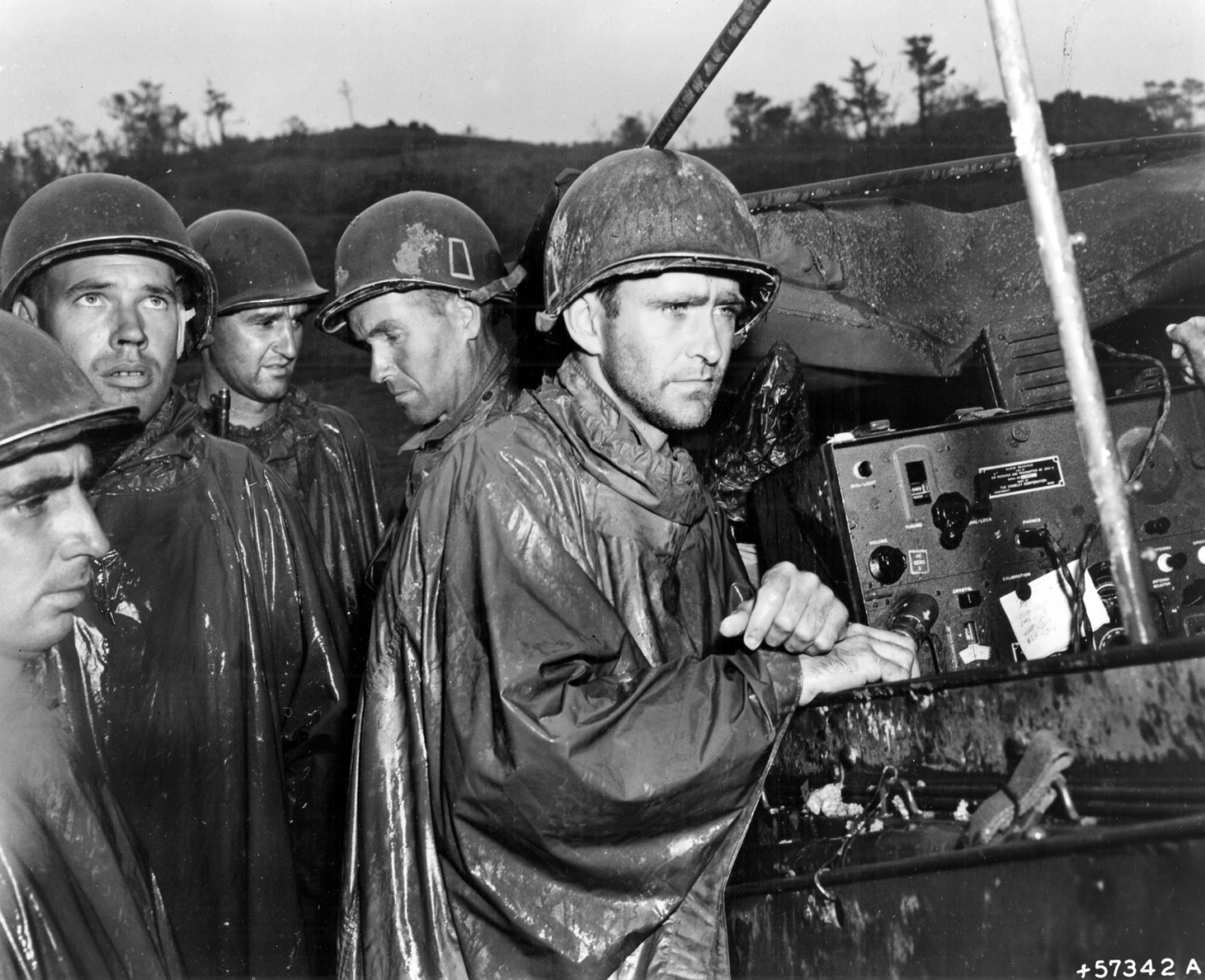
The British, no longer needing to attack German cities, turned the job over to Bomber Command, whose Avro Lancasters could bring home the exhausted men. Among the RAF units that happily flew ex-POWs home was the legendary Dambusters, No. 617 Squadron.
Operation Exodus flew the Commonwealth POWs from various RAF bases in western Germany back the United Kingdom, where they received new uniforms, got medical checks, and were debriefed by intelligence officers seeking information about subjects ranging from German rocket experiments to suspected war criminals. Most of all, the Women’s Voluntary Services made sure the ex-POWs’ billets were comfortable, running messes, providing a club for entertainment, and putting flowers in rooms.
The American approach was similar but better organized. All their ex-POWs went to Camp Lucky Strike on the French coast. After processing similar to that run by the British, these ex-POWs boarded ocean liners for the 3,000-mile trip back home.
There was still more mopping up to do in Europe, though. On May 9, two British destroyers steamed into St. Peter Port in Jersey to accept the surrender of the German-occupied Channel Islands. The German delegate enraged his British captors by giving the Hitler salute. On May 10, the isolated German garrisons in the French cities of Lorient, St. Nazaire, and besieged Dunkirk surrendered as well. At the latter, the German general brought his own prepared surrender document to the table. German troops continued to fight their way out of Yugoslavia until May 15.
In Flensburg, German ministries occupied rooms of naval training facilities, pretending to work. One secretary typed up the Wehrmacht’s training plan for 1947. Another high-ranking official simply napped in his office. The Minister of Food’s sole job seemed to be providing whiskey for cabinet meetings. The Allies ended the farce on May 23 by arresting the whole government and taking over administration of the defeated Reich as planned. Newspaper cameramen took photographs of angry secretaries—some holding poodles—being lined up by British troops of the 11th Armoured Division to go into captivity.
But May 8 remained a day of celebration and news. In the United Kingdom, bonfires were lit in the evening all across the British Isles to mark an end to years of darkness brought on by the blackout.
Sweden broke relations with Germany, and King Gustav sent congratulations to his neighboring Scandinavian states on their liberation. Prince Olav of Norway flew to Oslo with British 1st Airborne Division troops to take the surrender of German troops there. The prince stood on an Oslo pier, saluting as the Norwegian flag was raised again. Norway’s leading traitor, Vidkun Quisling, was arrested to face a treason trial and execution.
Free Polish forces in Italy and Britain held masses where priests and senior officers noted grimly that there would be no peace for Poland unless the Communist government the Soviets had installed in Warsaw were removed and free elections allowed. That would not happen for 40 years. Most of the free Poles would wind up living in Britain or the United States.
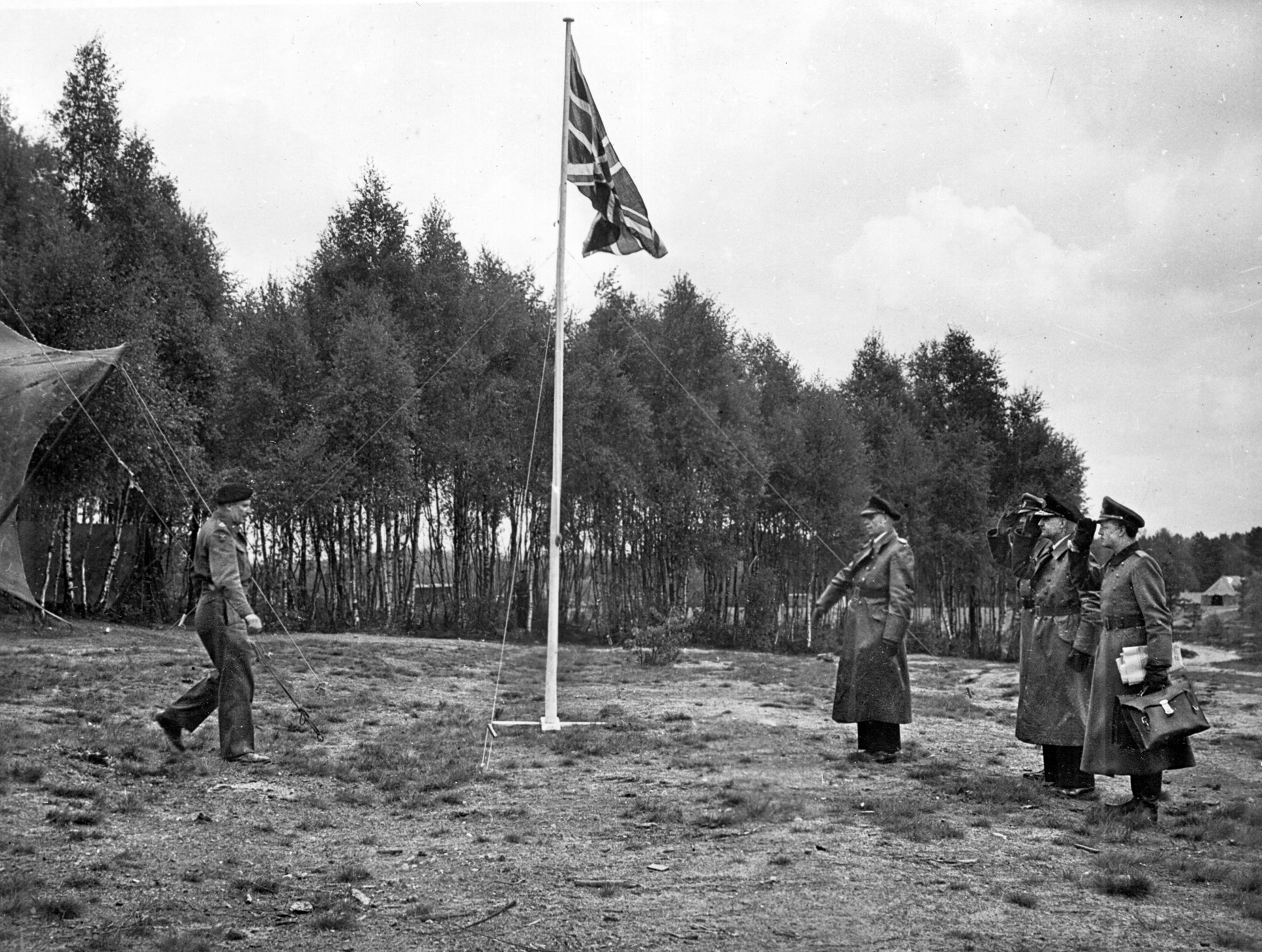
In Ottawa, ticker tape poured on celebrating throngs in the streets as the Canadian parliament ended conscription. New Zealanders got a holiday. Francisco Franco’s Spain tried to gain the support of Britain, America, and France by sending the latter nation’s Pierre Laval, their top fascist, back to France for a treason trial.
The Pulitzer committee presented its awards that day, honoring Harold “Hal” Boyle of the Associated Press as the top reporter for 1944 and AP photographer Joe Rosenthal with an award for distinguished achievement for his legendary shot of Marines raising Old Glory over Iwo Jima.
The Army announced that Sergeant Charles H. Coolidge, of Signal Mountain, Tennessee, would receive the Medal of Honor for fending off a German attack in France on October 26, 1944. He was recognized for his coolness and courage in firing off bazookas at nearly point-blank range at advancing German tanks, leading his men, mostly new replacements, and directing their fire, and then conducting an orderly withdrawal amid rain, cold, and dense woods. By 2019, Coolidge, then aged 98, would be the only living Medal of Honor recipient from the European theater, still going to work regularly at his family business, Chattanooga Printing and Engraving.
Democratic party boss Robert Hannegan was confirmed by the Senate to serve as postmaster general, then still a cabinet spot and reward for political chieftains. The House of Representatives investigated shortages of rationed sugar. Americans could purchase complete dining room mahogany furniture sets for $42.50 and women’s gowns for $3.95. Hollywood gossip columnist Louella Parsons told her readers that there was talk of a movie about Mussolini’s life, with John Considine as Il Duce.
The Soviet Union, irritated by the Western celebrations, used May 9 as their V-E Day, and have done so ever since. In Moscow, Soviet troops dumped captured Nazi banners—the kinds that Nazi stormtroopers brandished at pre-war rallies—disdainfully at the feet of Stalin in Red Square. That evening, antiaircraft guns were fired off, their tracers illuminating the Kremlin.
These events, along with the announcements of victory in Europe, were broadcast around the world almost non-stop. Among the listeners to the excited broadcasters, joyful leaders, and cheering citizens in New York’s Times Square was a group of five infantrymen of the US 77th Infantry Division, drawn from New York City. The GIs were huddled around their field radio, wearing helmets and rain ponchos to avoid a downpour. They were on the Japanese-held island of Okinawa, and their faces showed several emotions, none of them happiness.
These 77th Division soldiers would have to attack a Japanese-held position later that day and likely suffer heavy casualties. Their war—and that of British troops in Burma, Chinese forces in their country, Australians in Borneo, New Zealand airmen in the Solomons, American and British sailors on warships off Okinawa, and starving Allied POWs in Manchuria and Japan—wasn’t over.
Author David Lippman resides in New Jersey and writes frequently on a variety of topics for WWII History.
